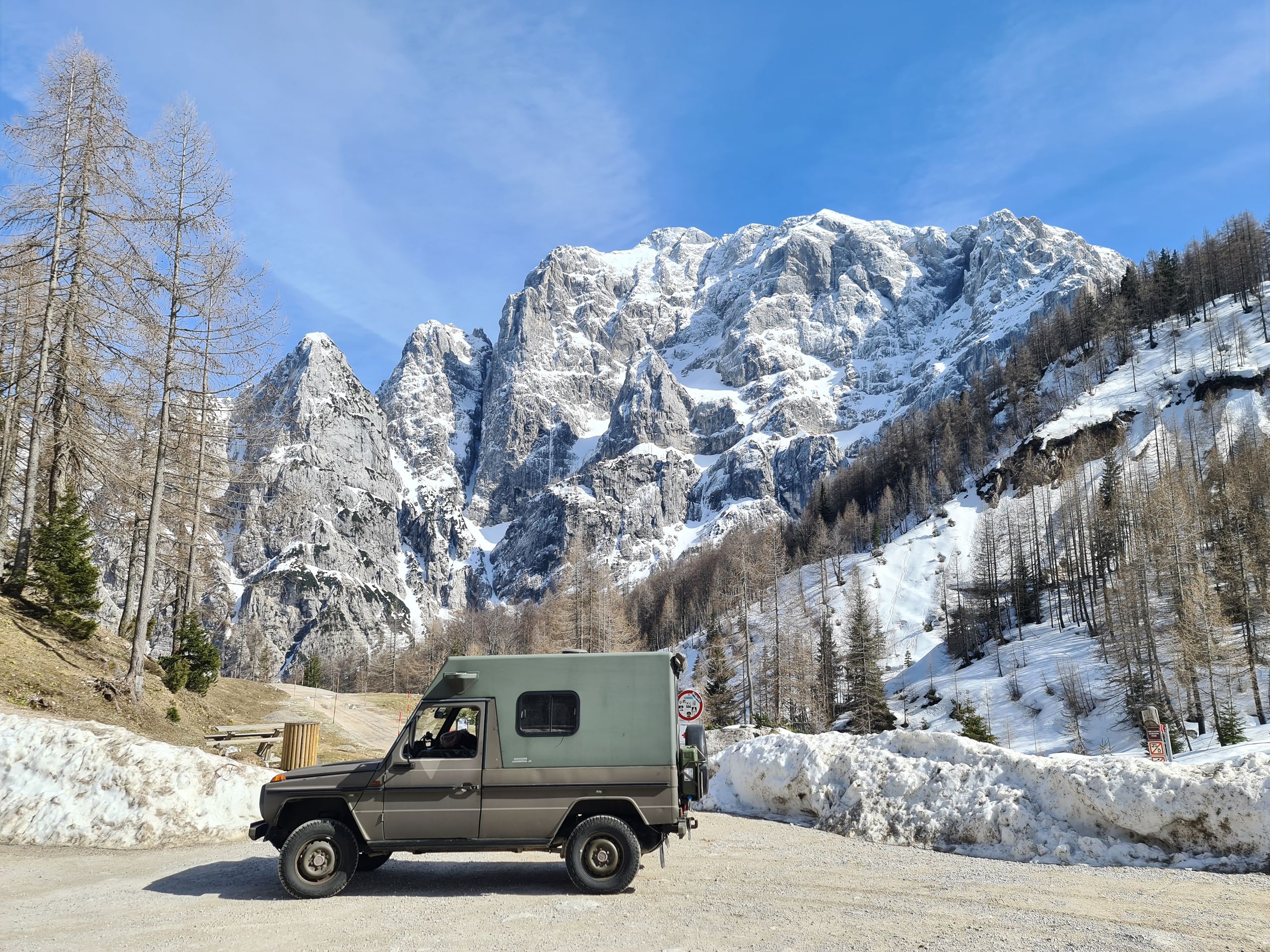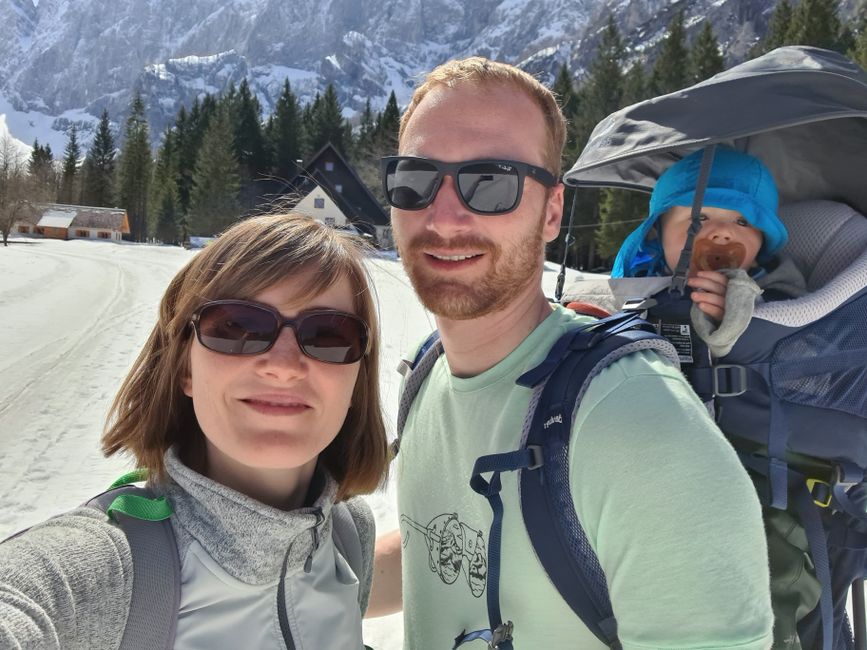
goinguntendrunter_2.1 Balkanedition
vakantio.de/goingunterdrunter_balkanedition
Istria and the islands of Cres, Lošinj and Krk
Жарияланды: 11.05.2022
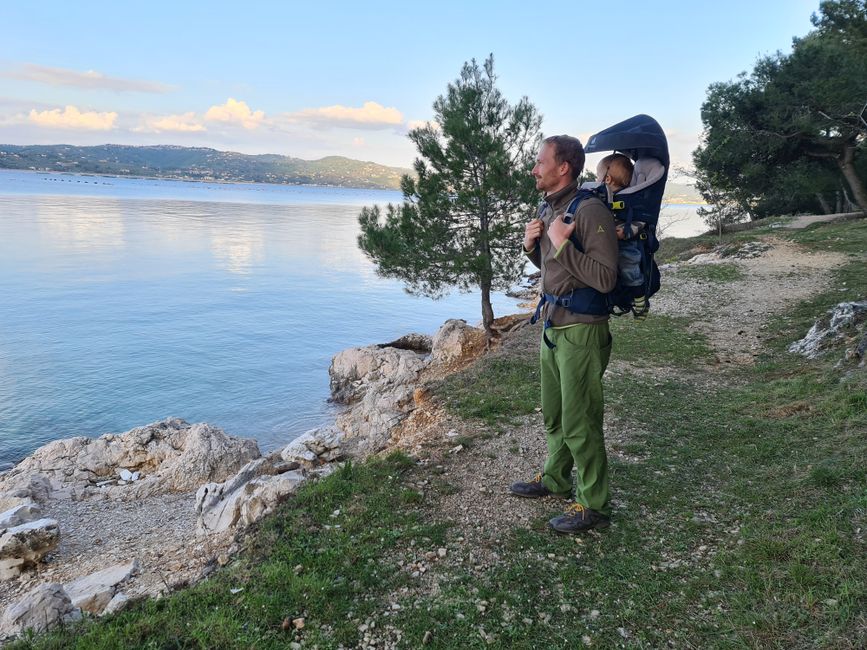
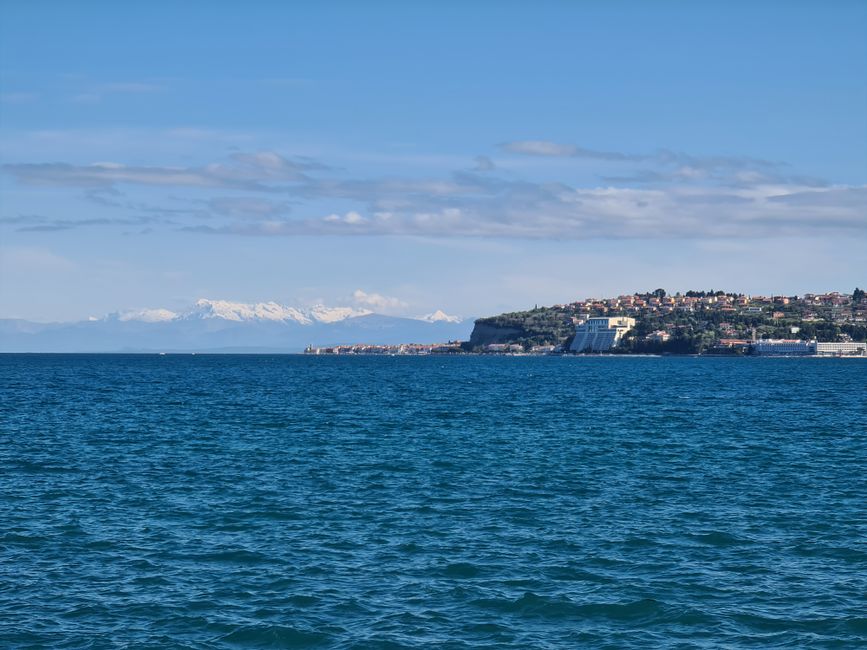
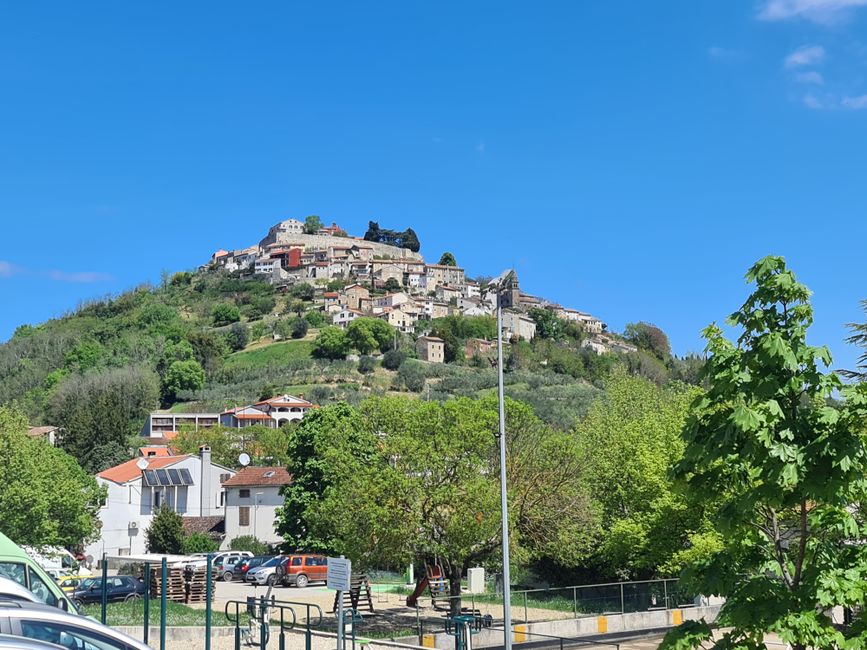
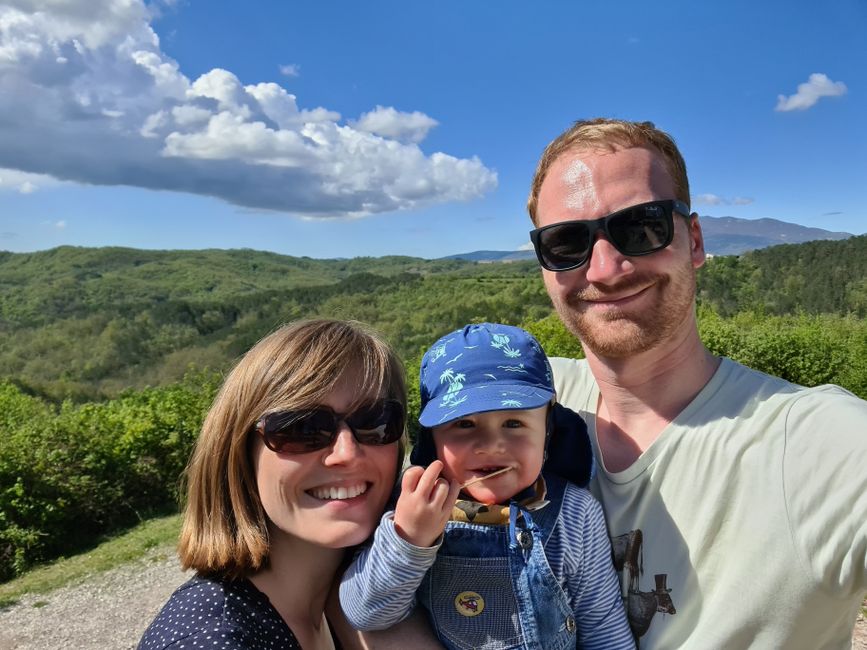
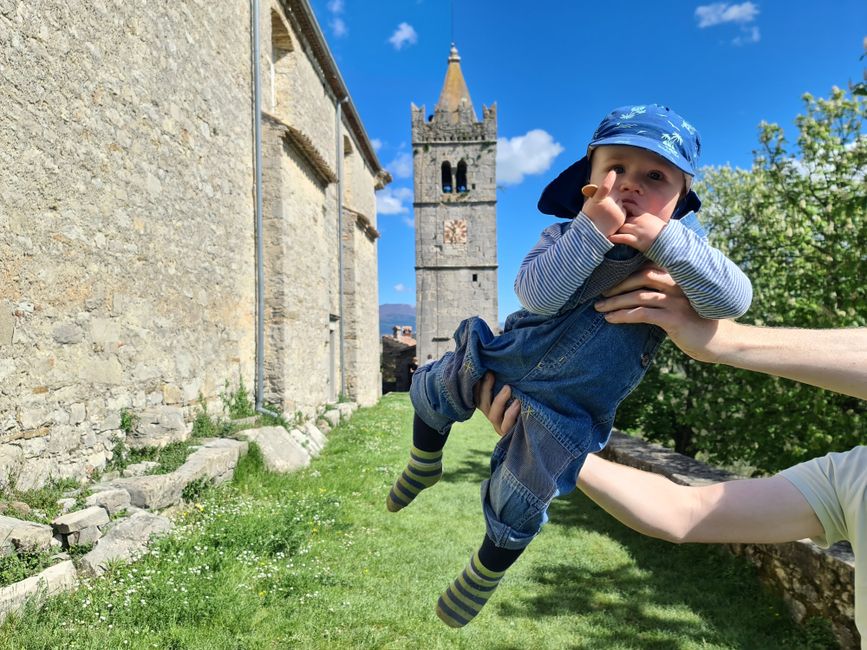
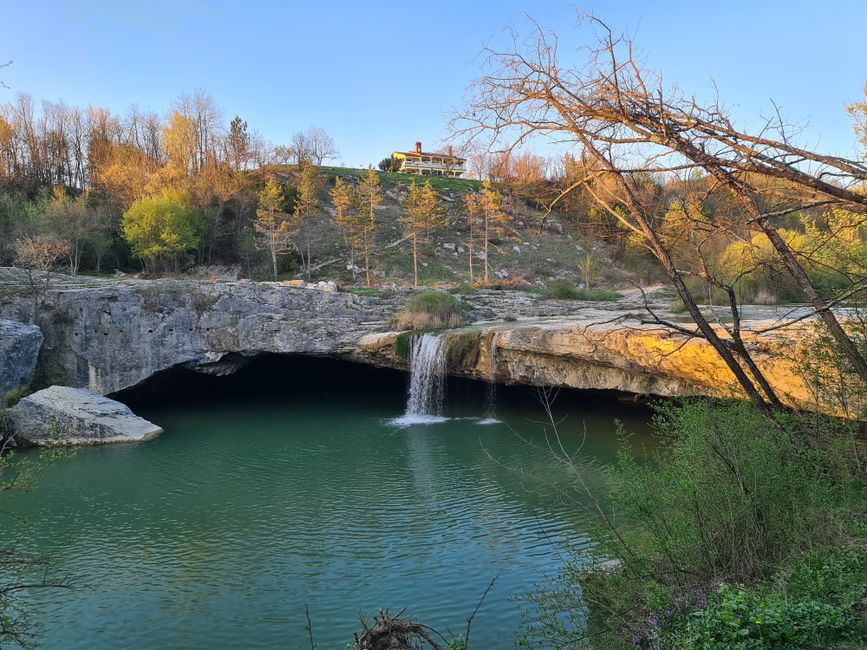
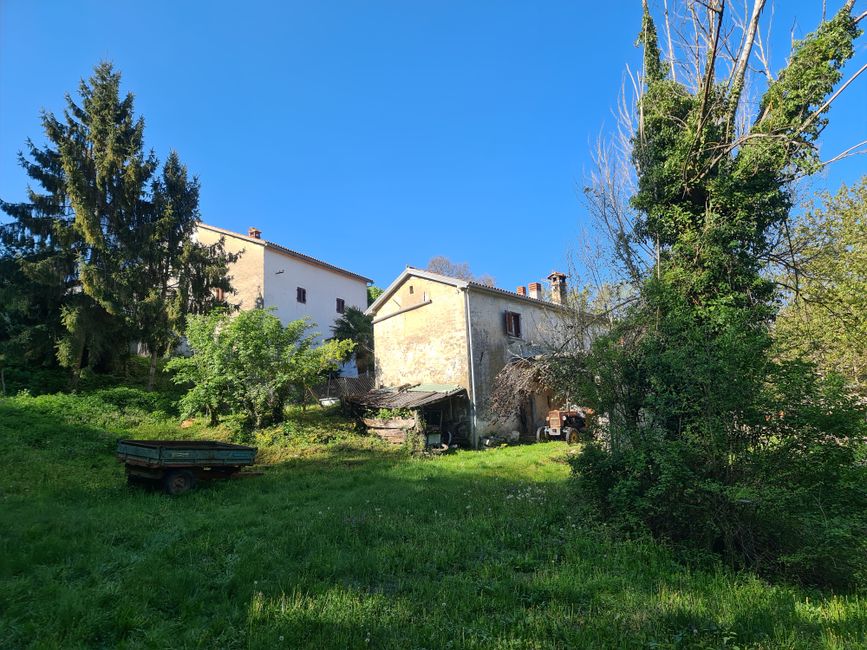
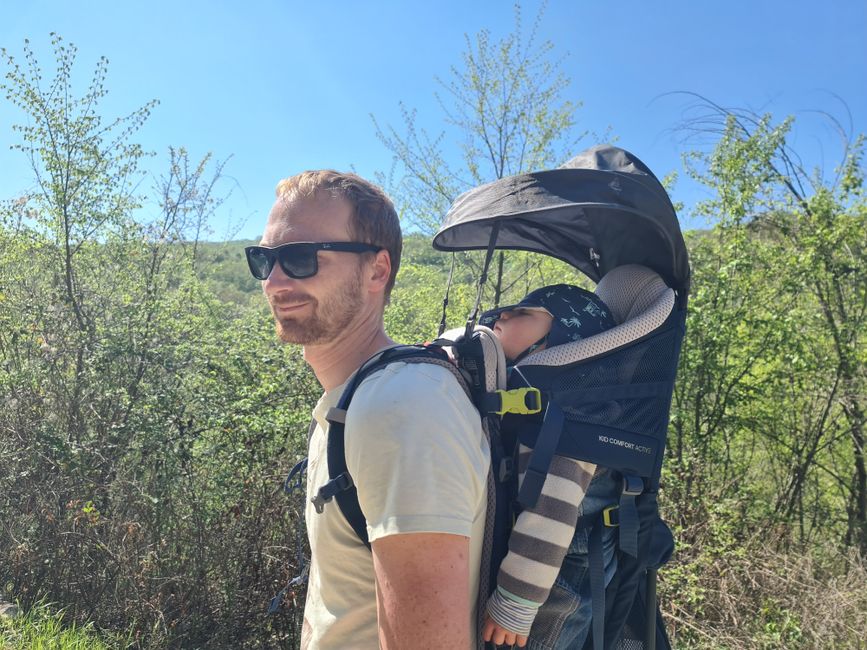
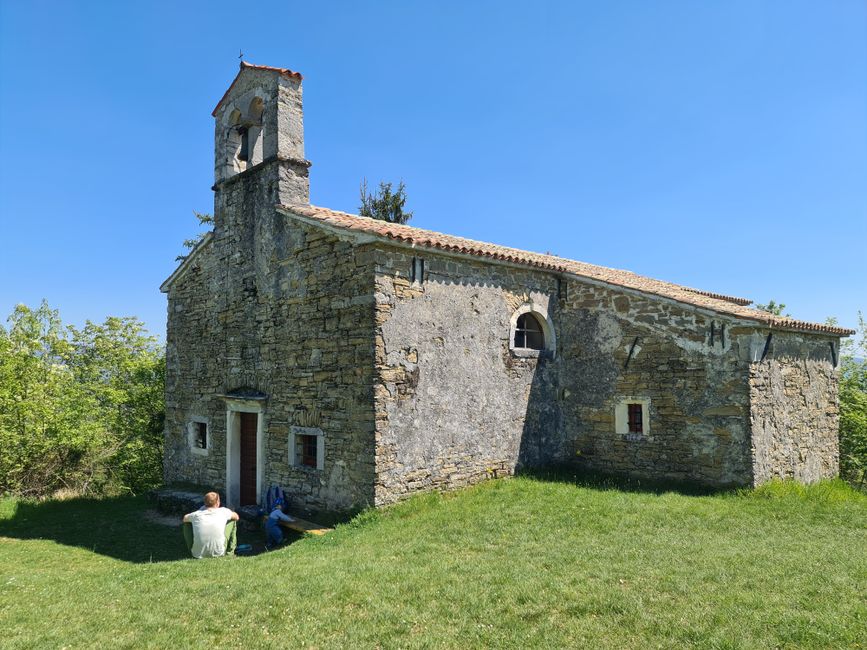
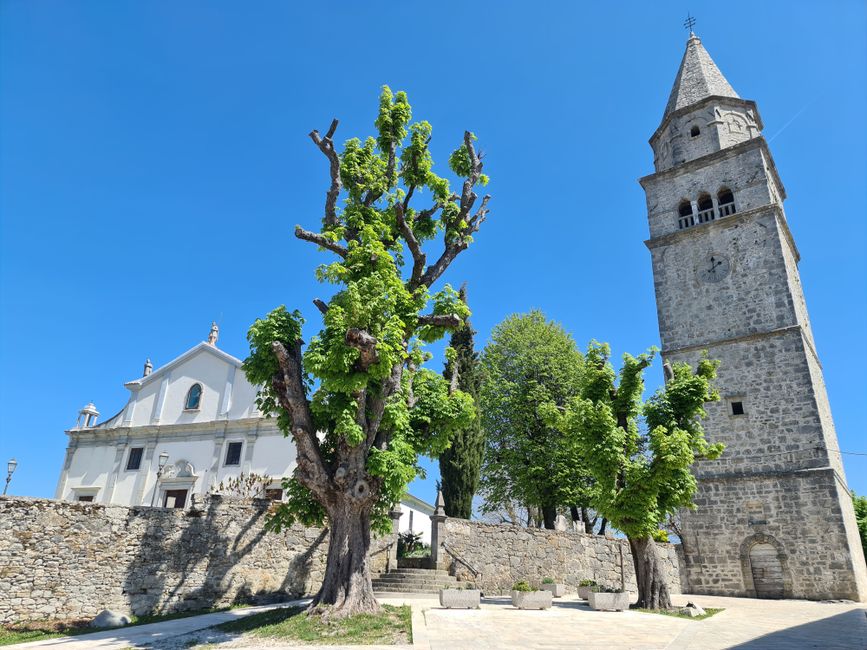
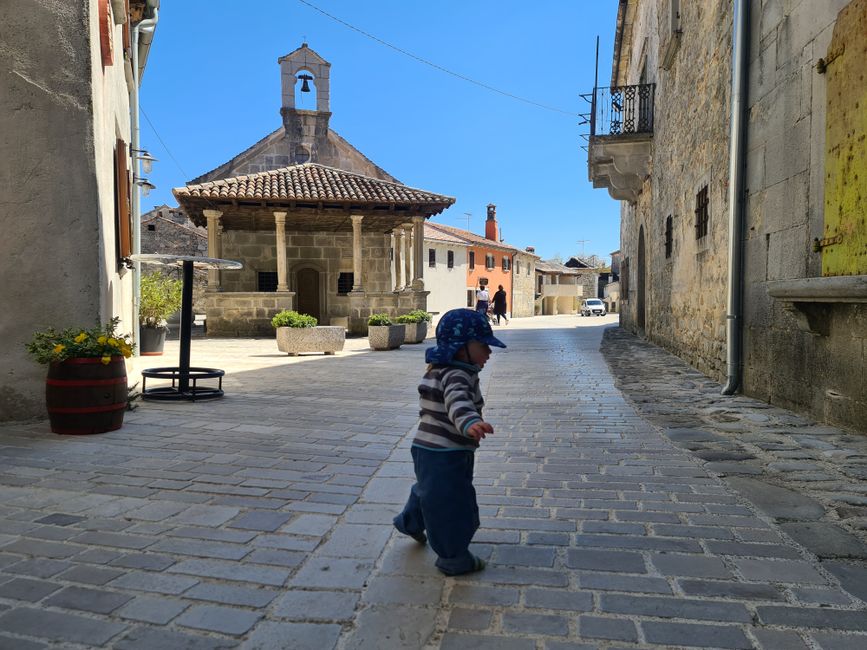
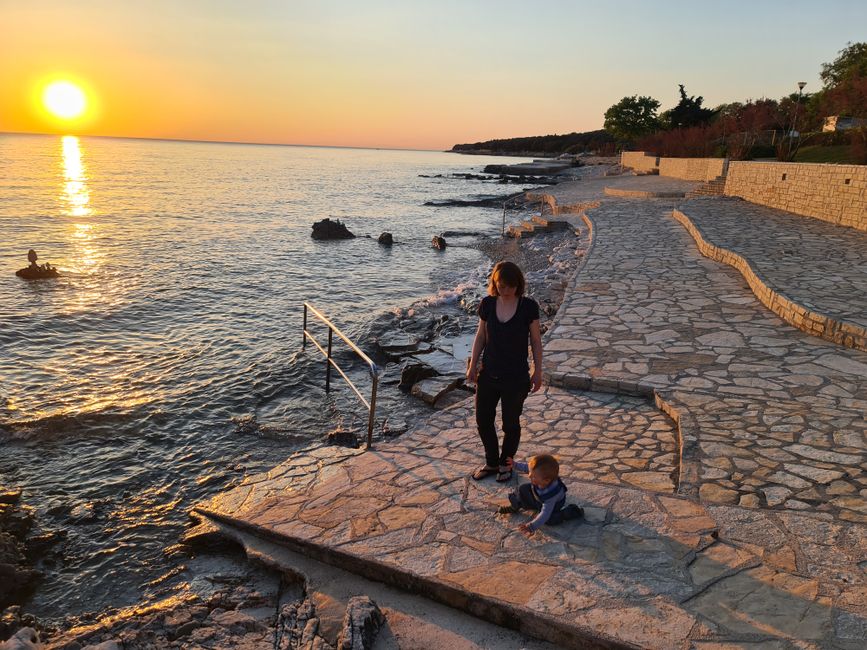
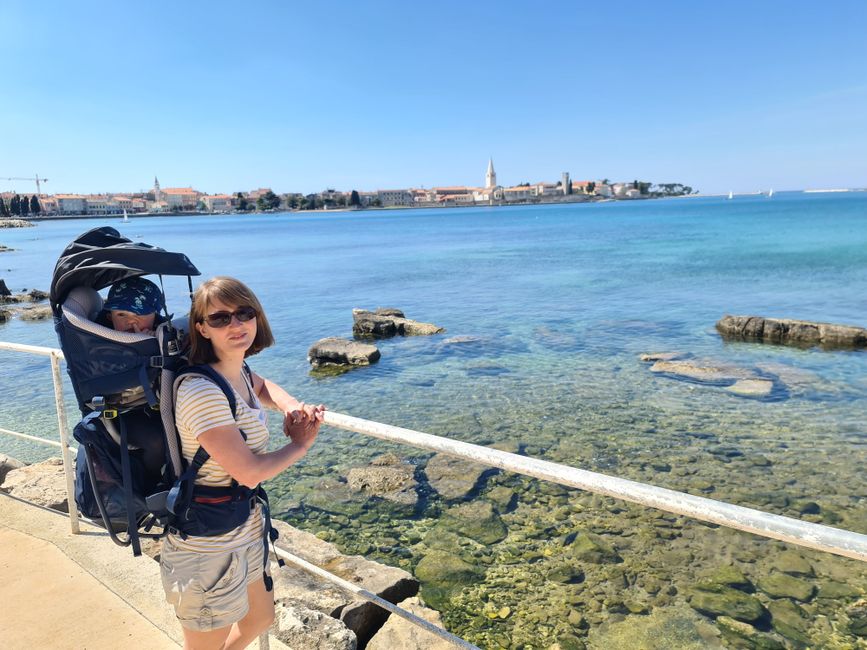
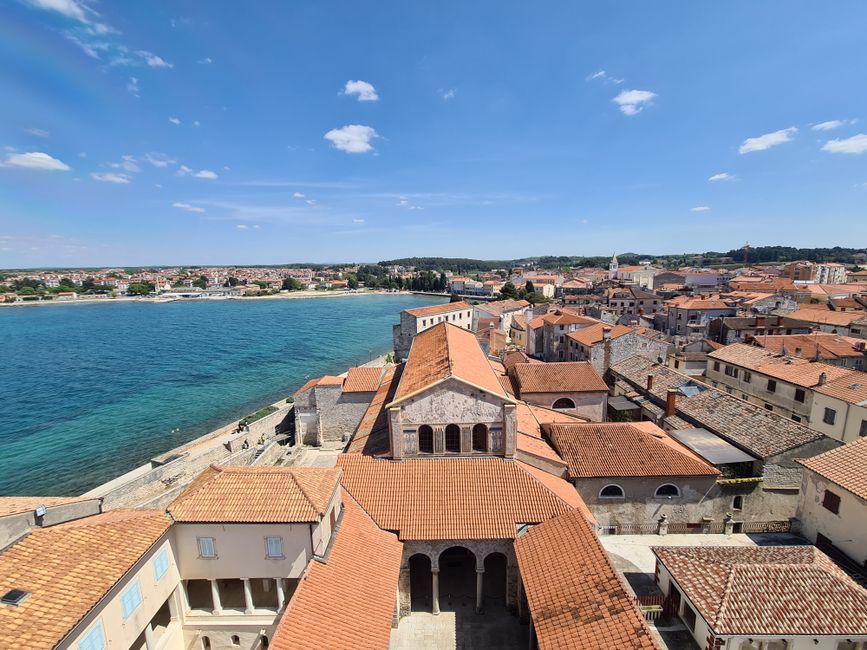
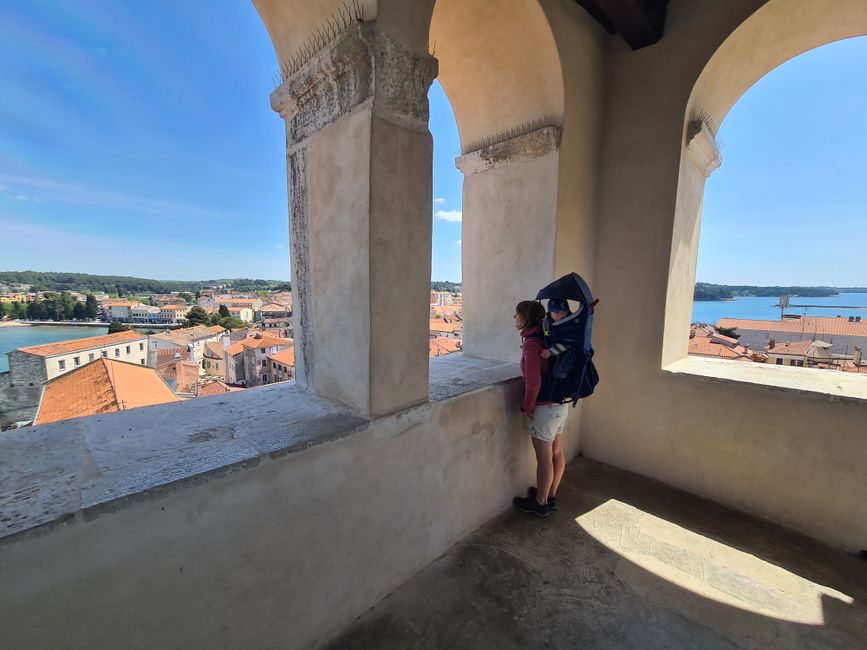
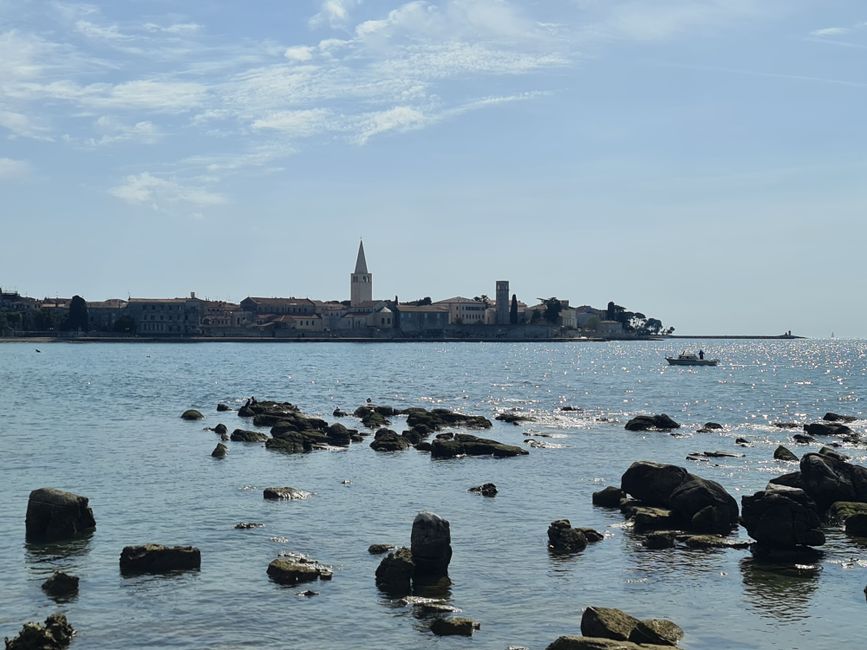
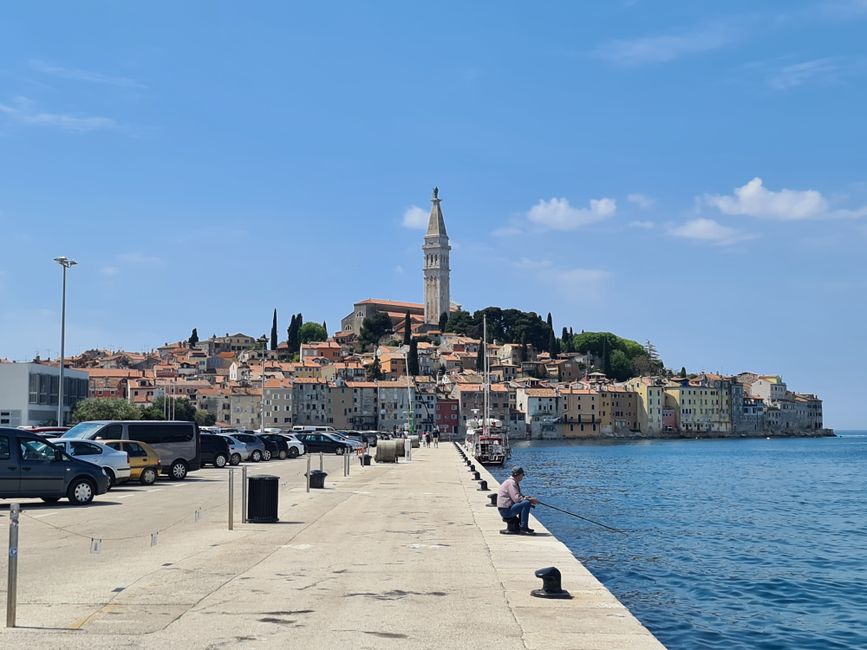
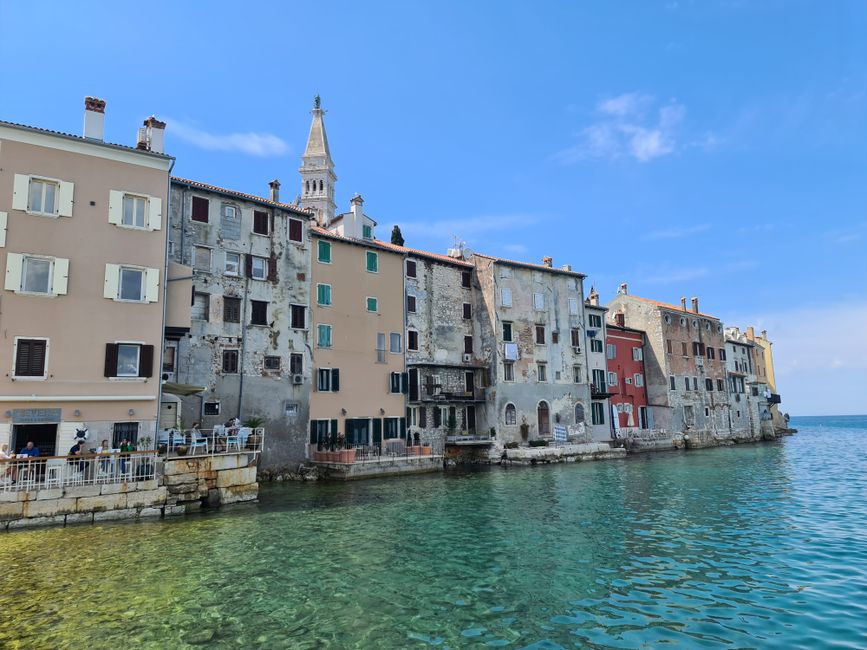
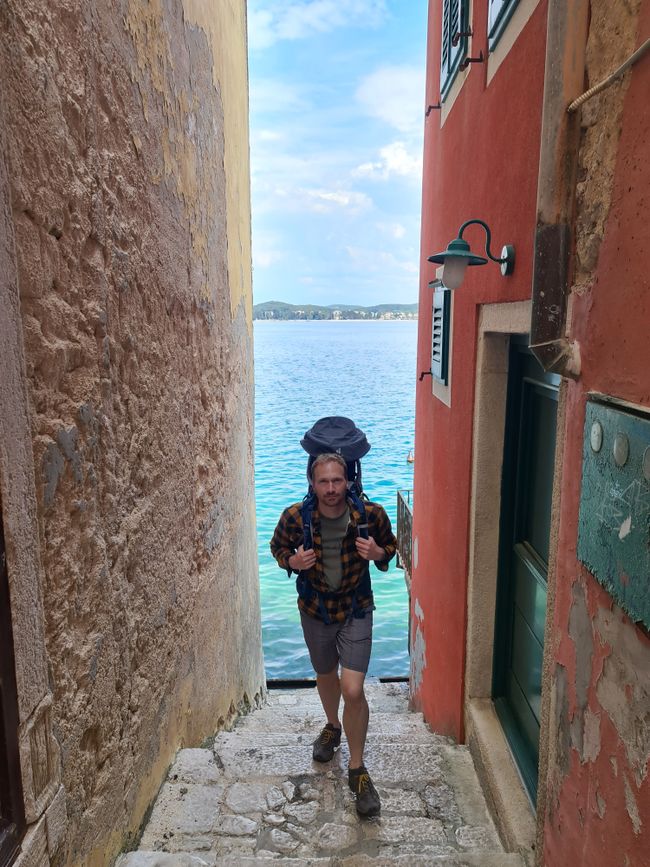
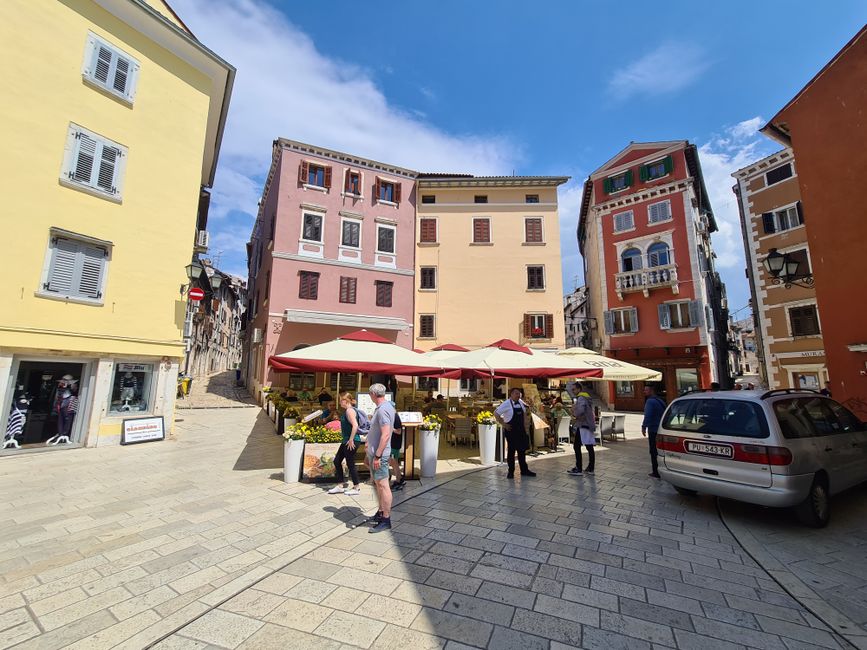
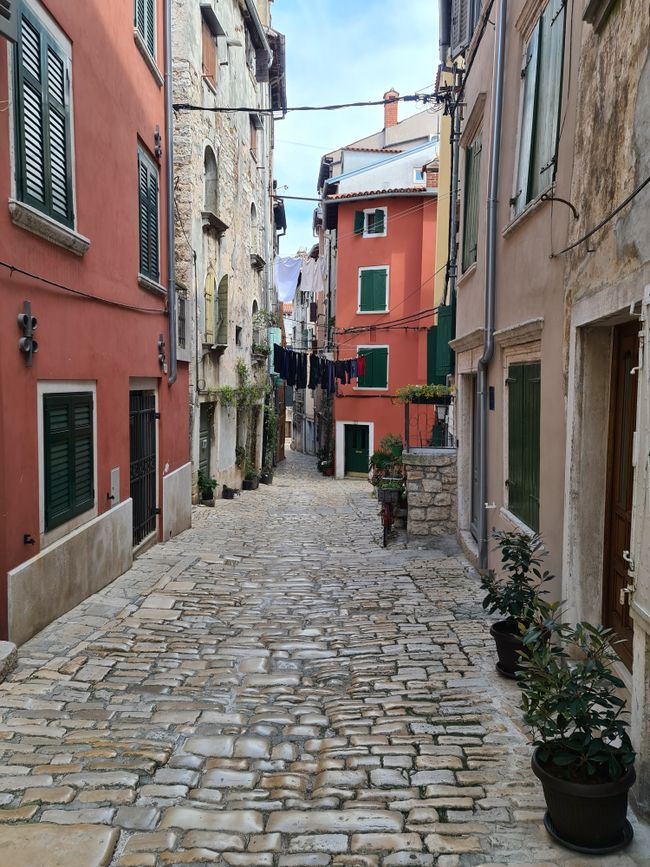
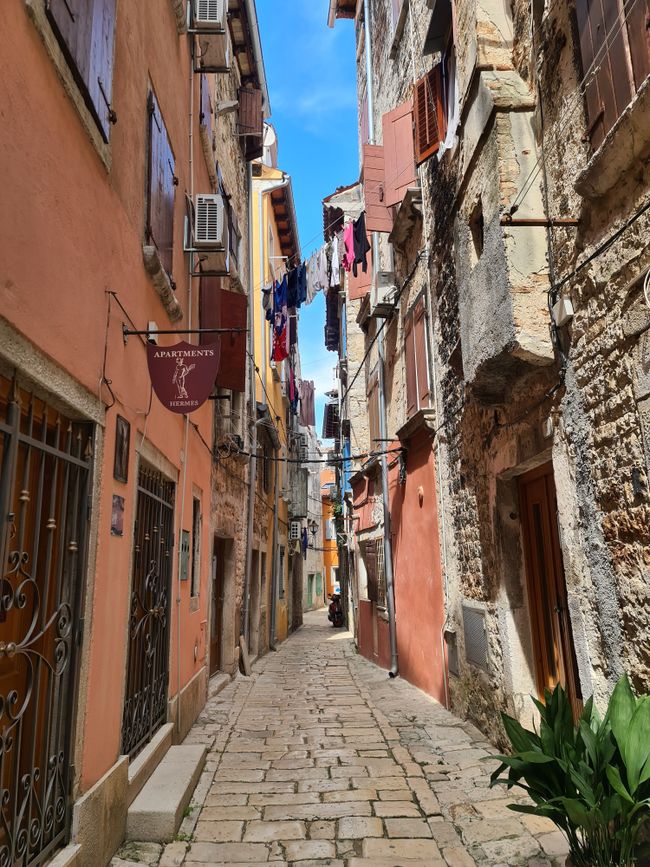
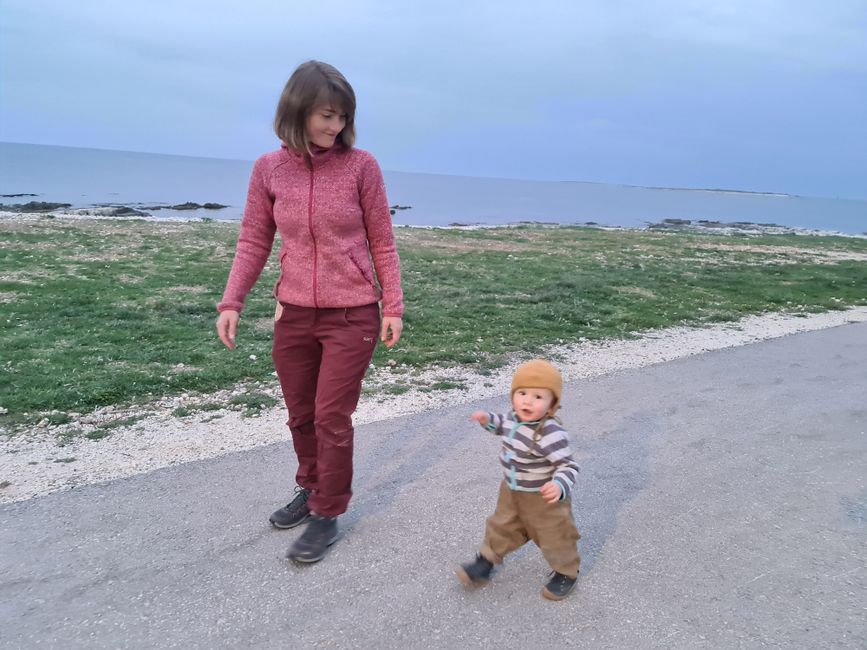
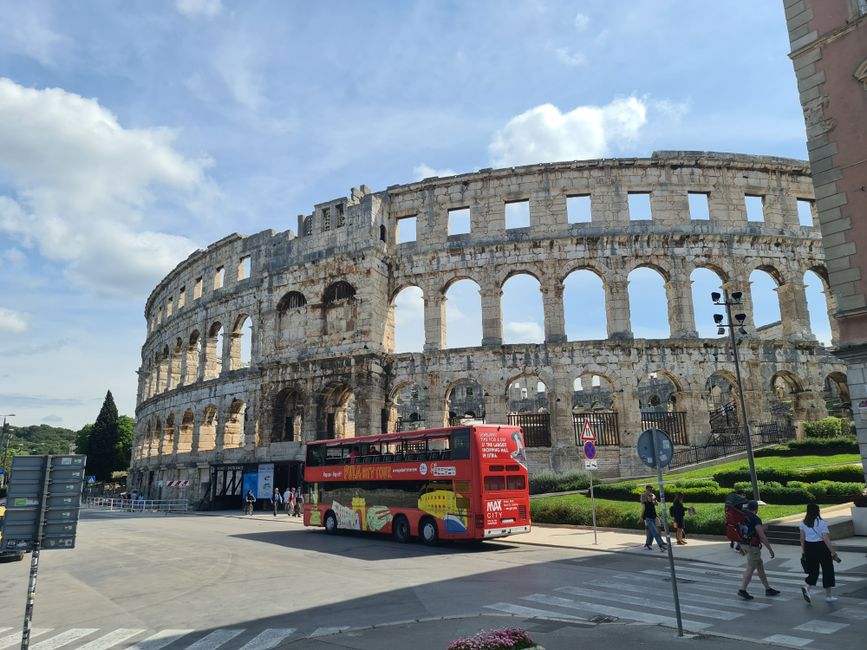
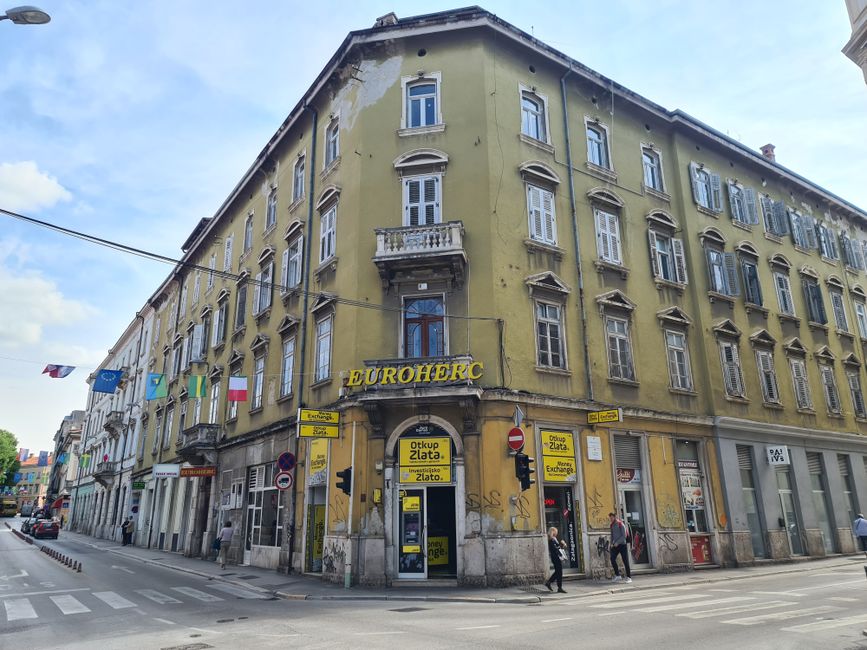
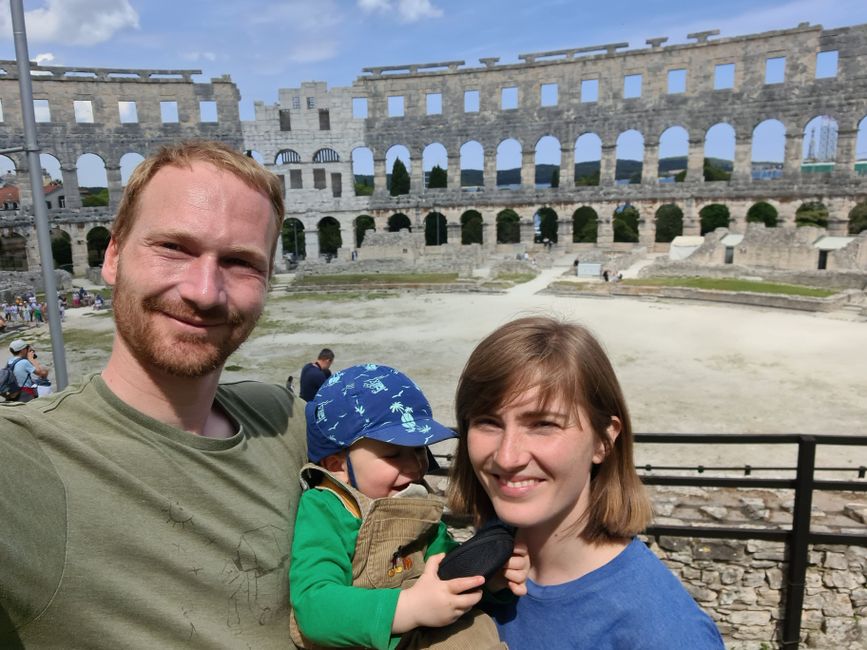
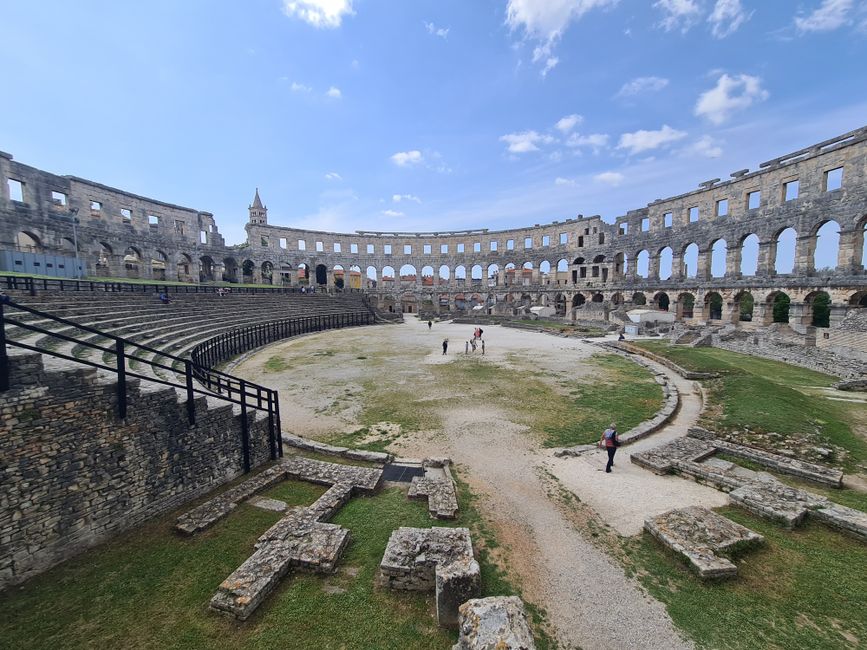
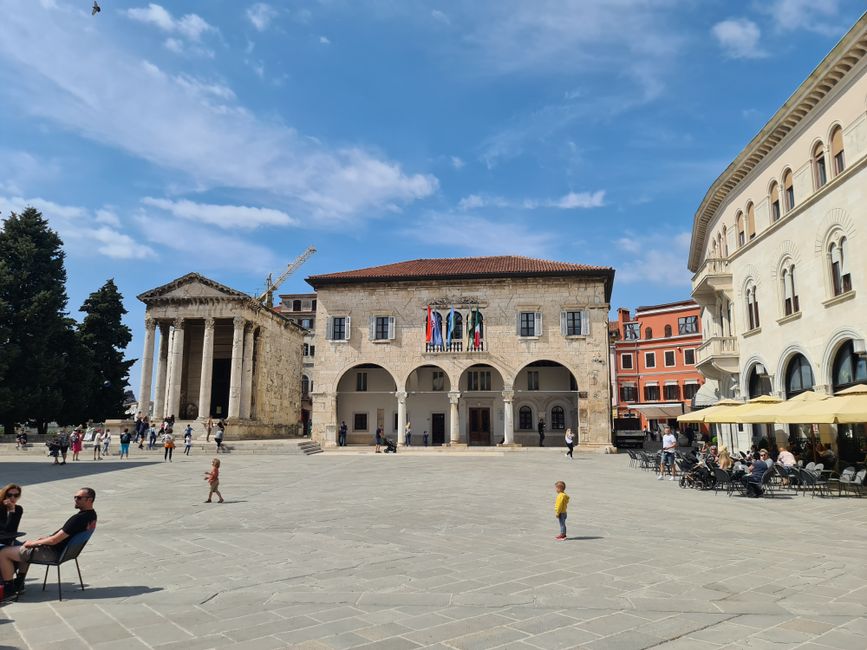
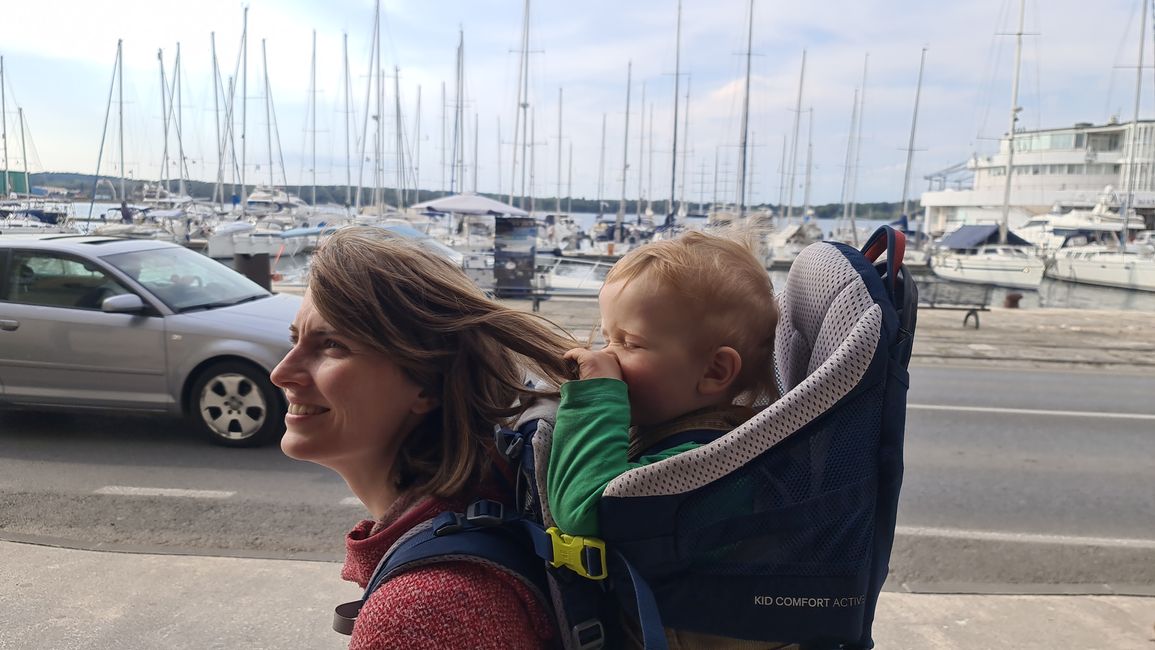
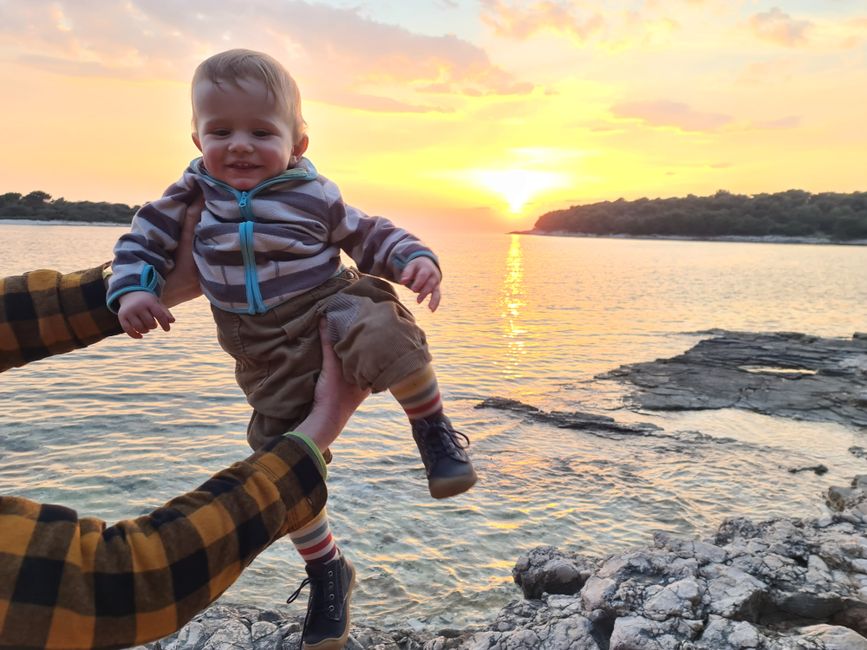
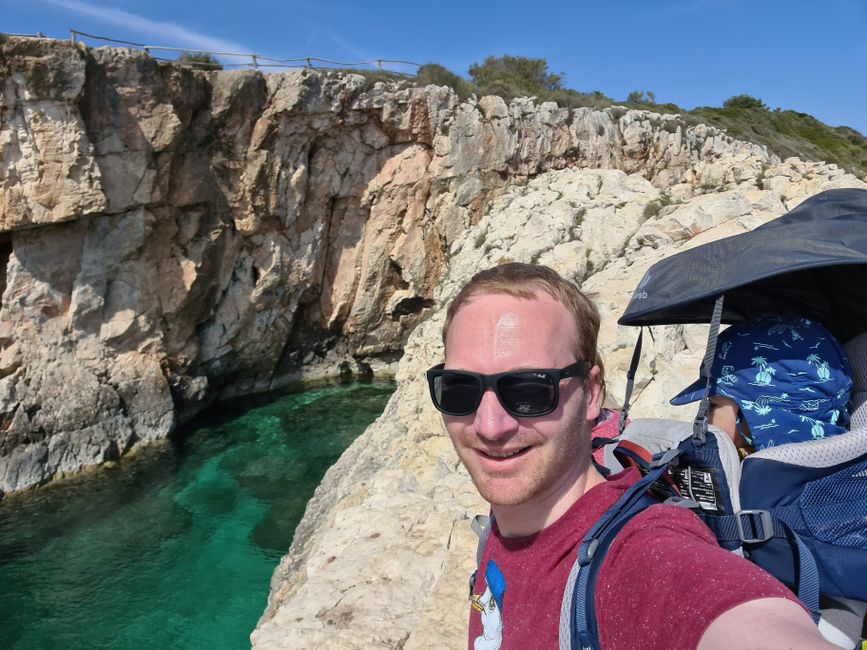
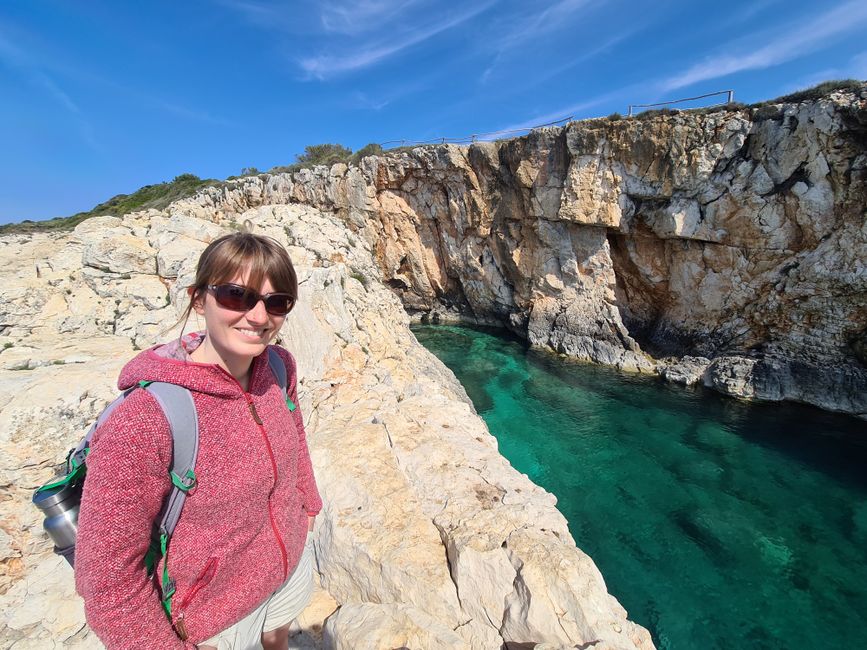
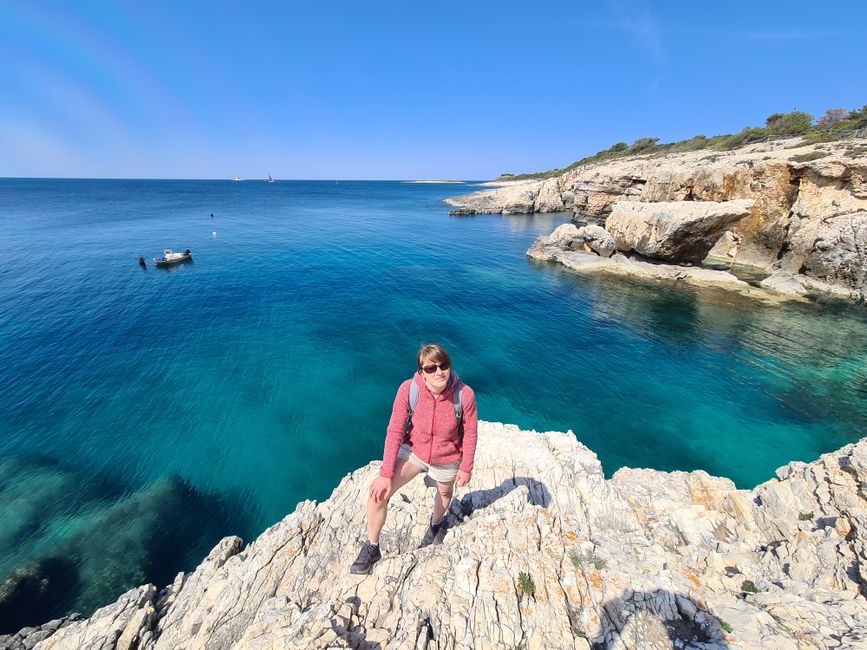
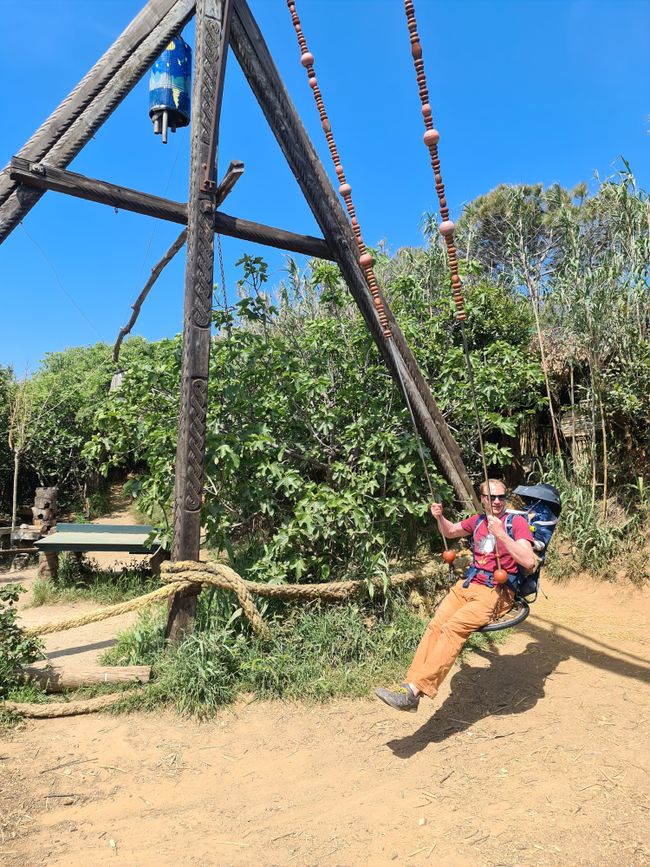
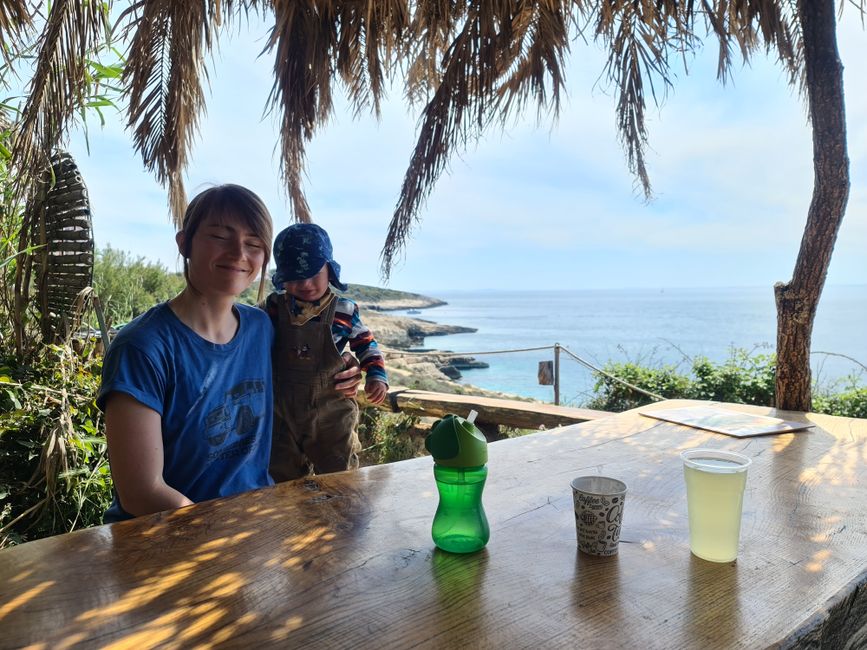
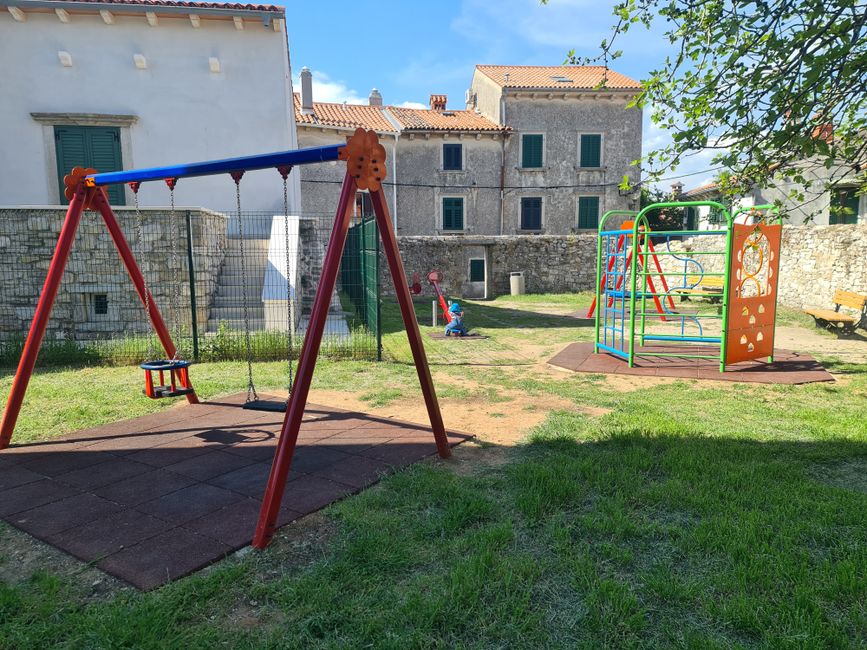
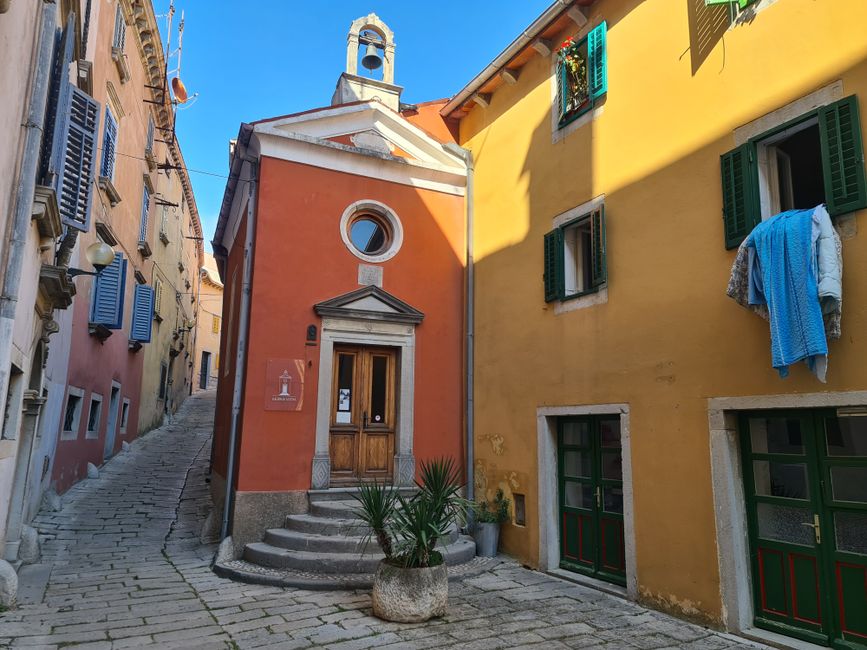
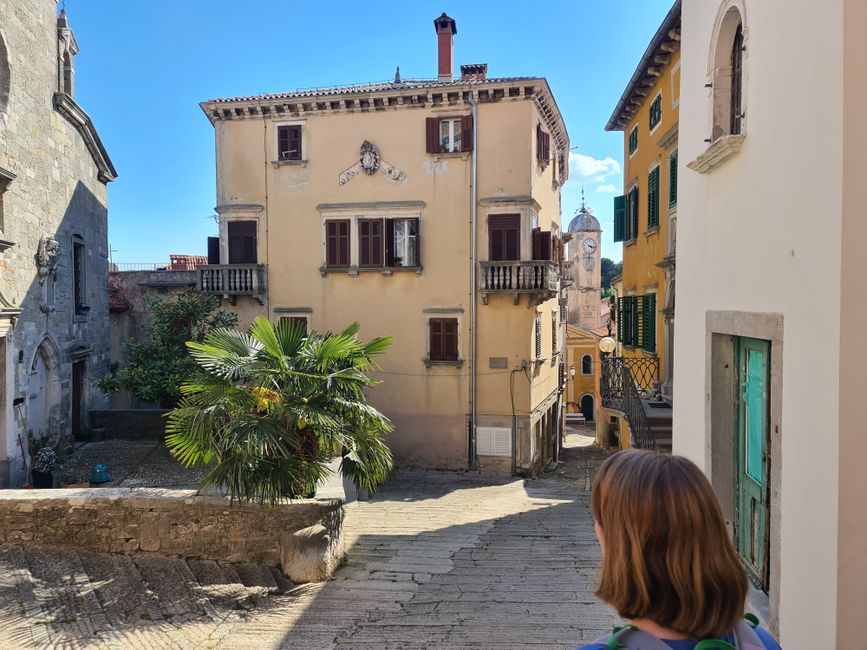
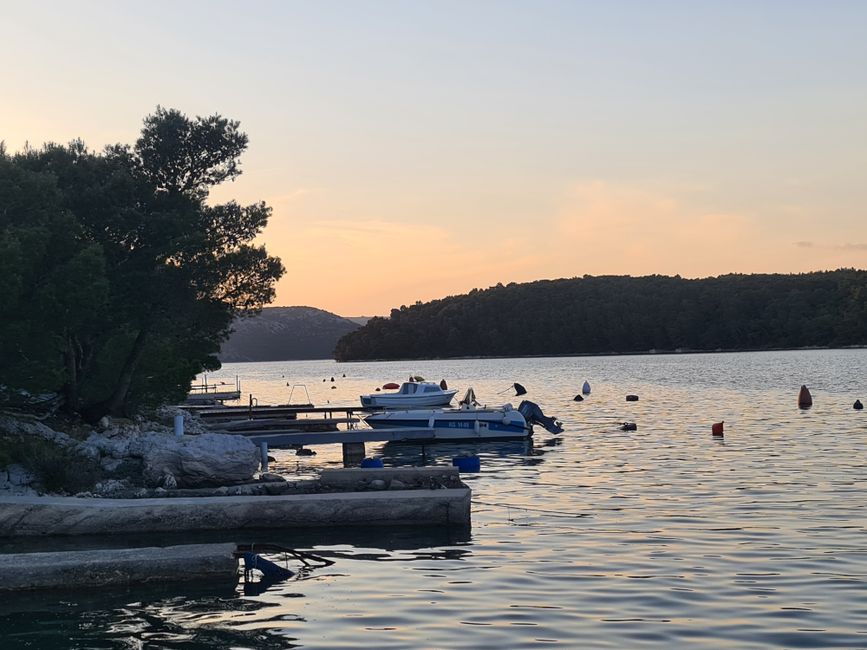
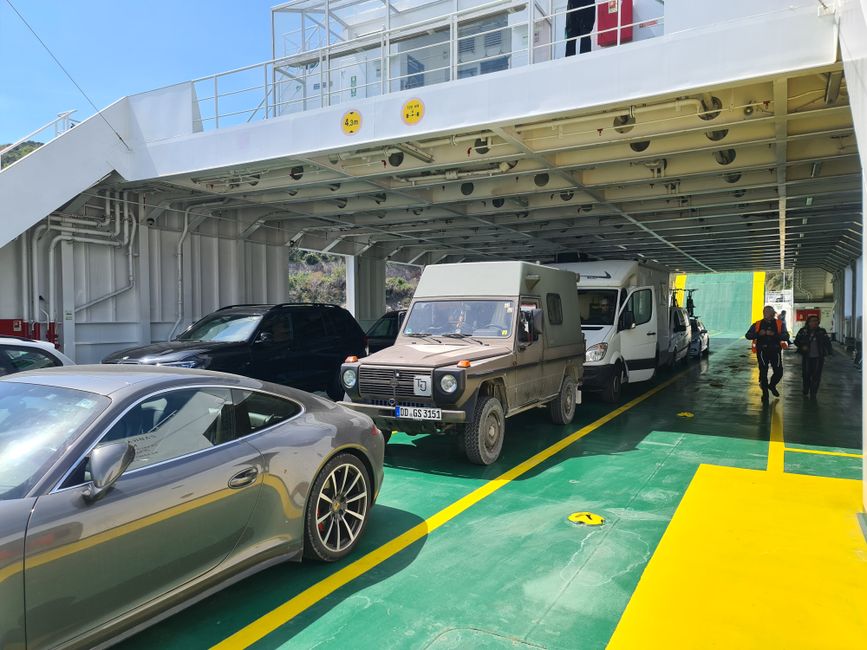
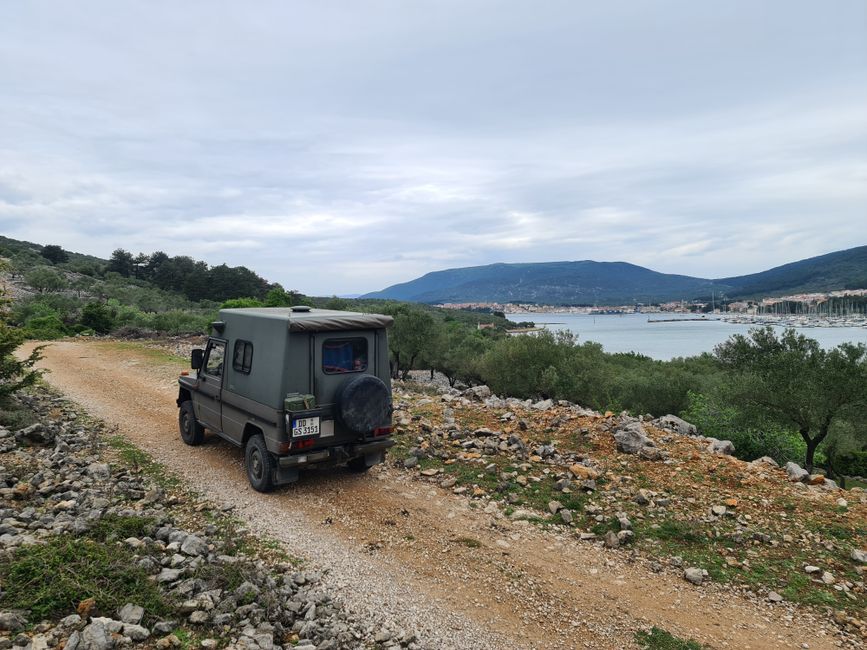
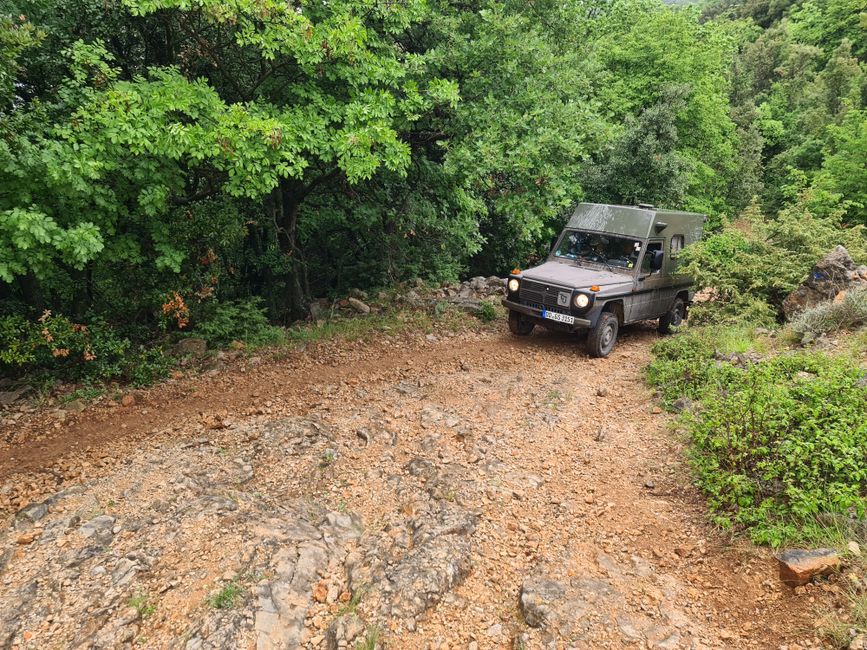
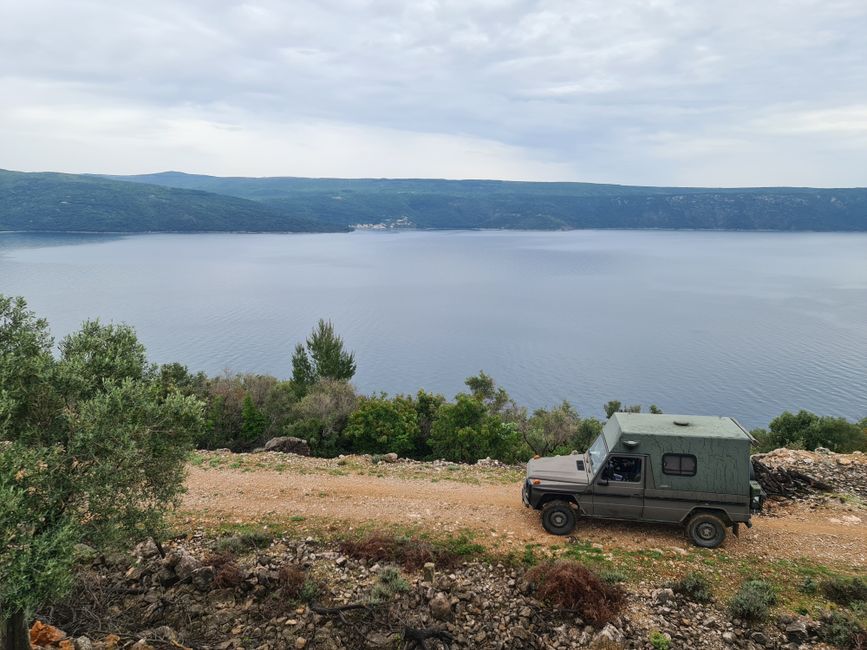
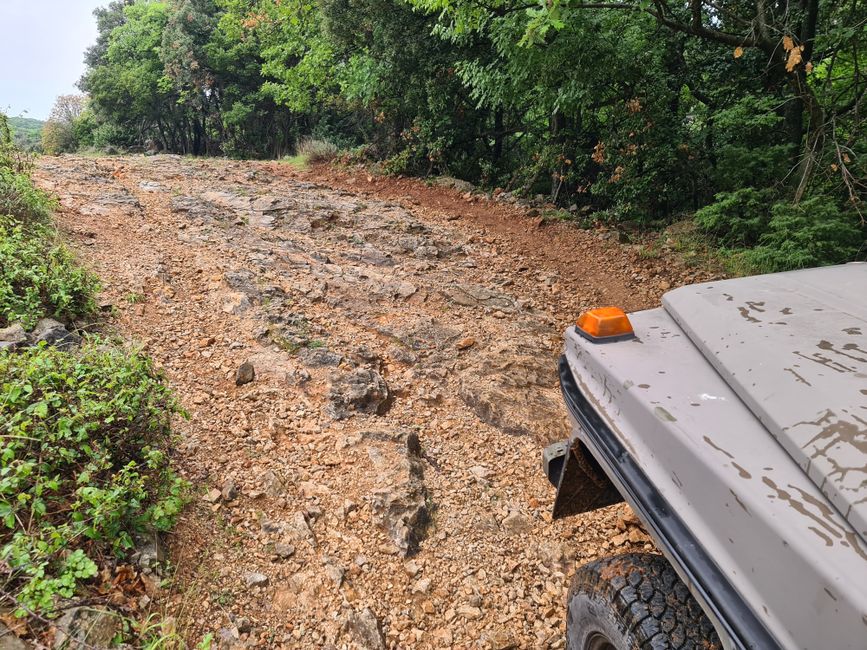
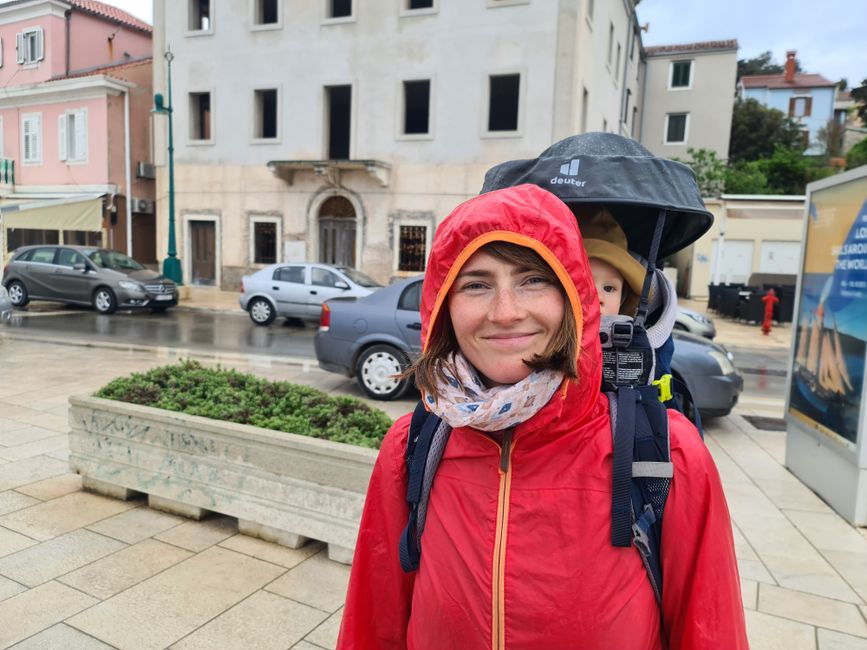
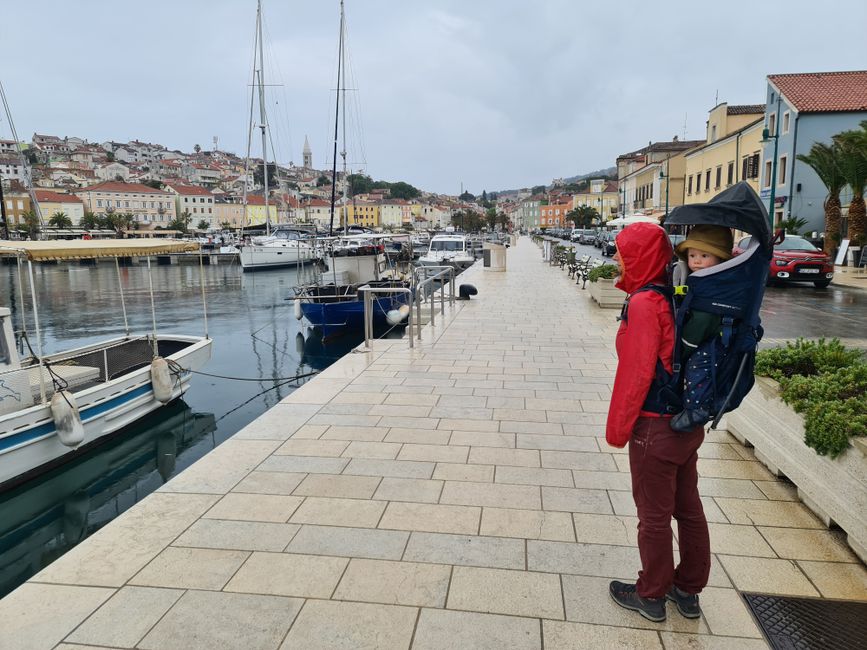
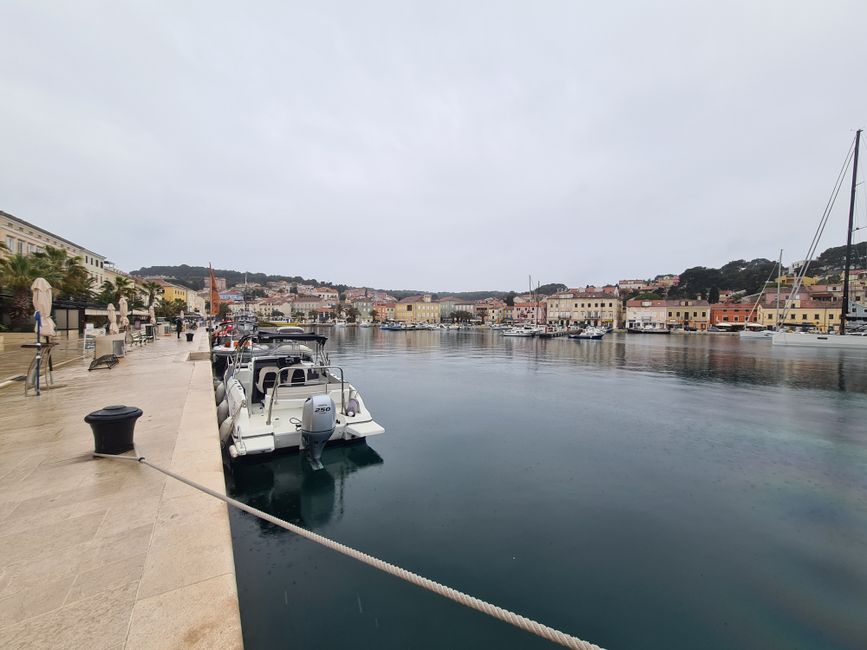
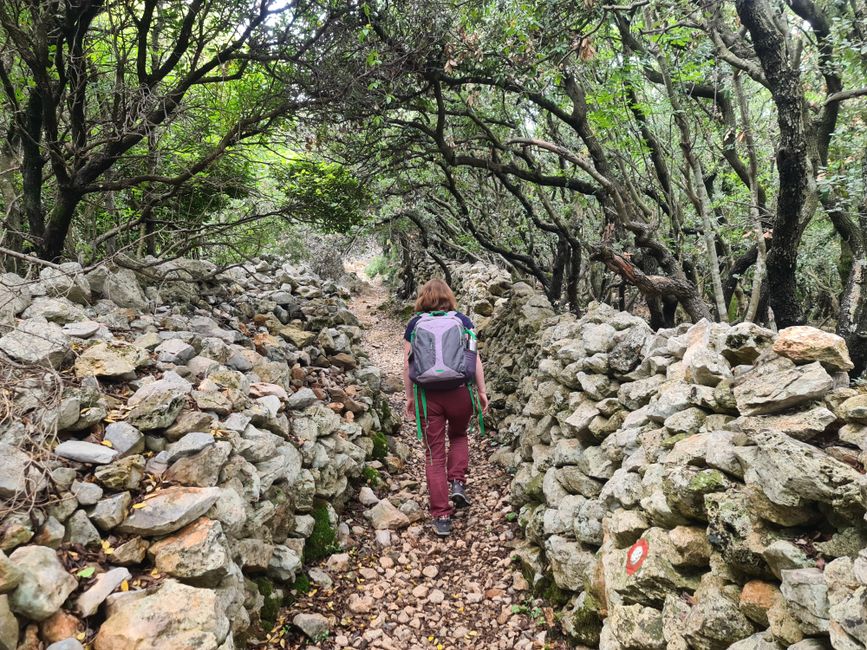
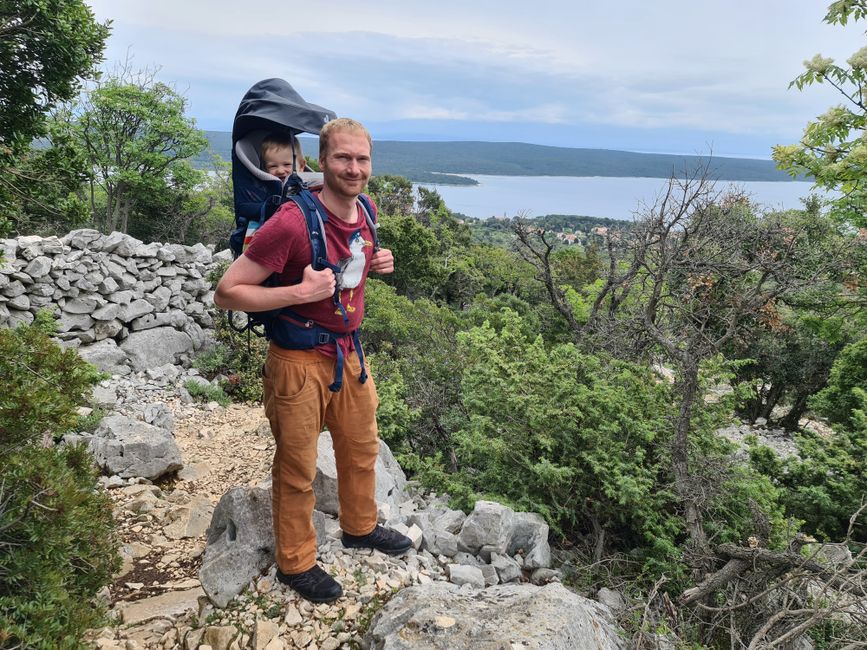
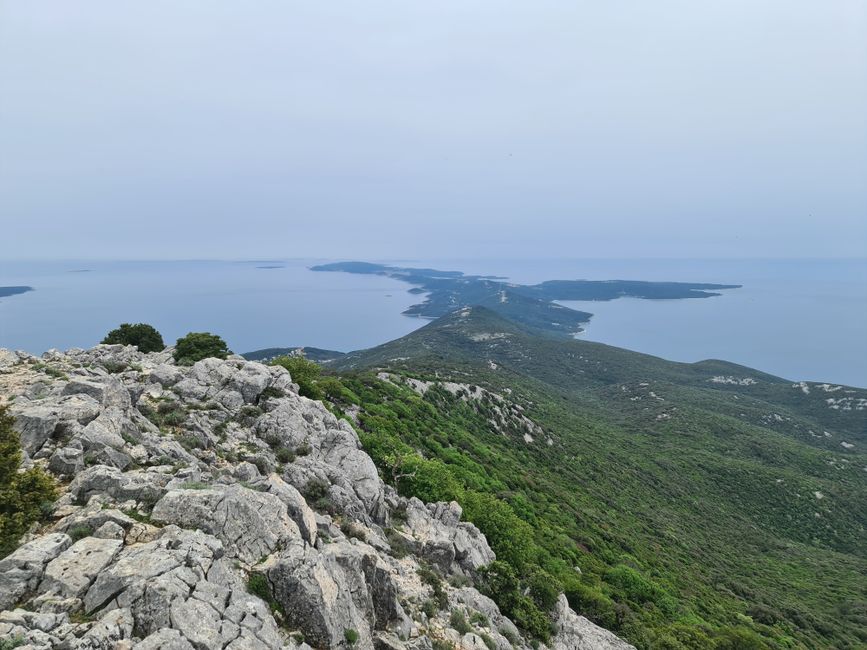
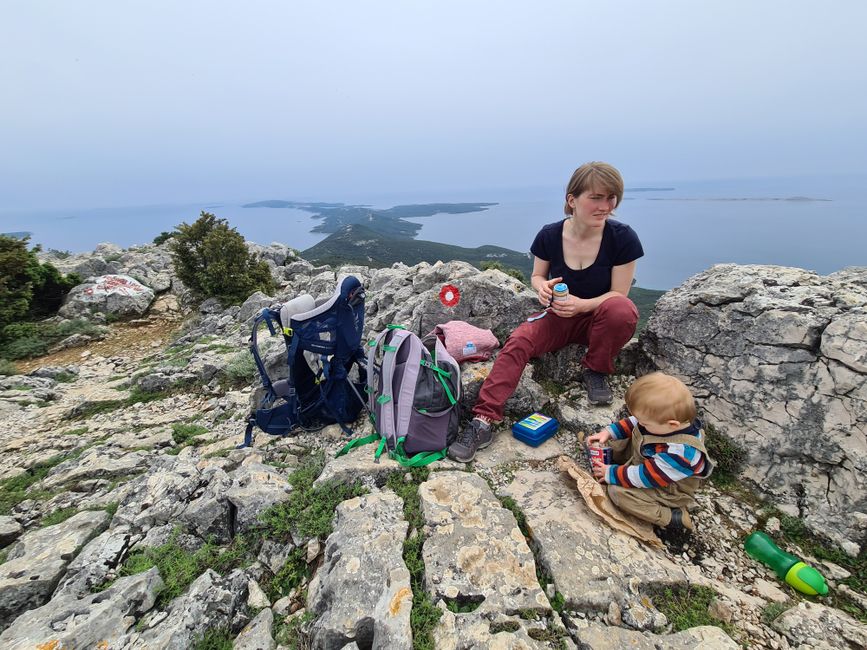
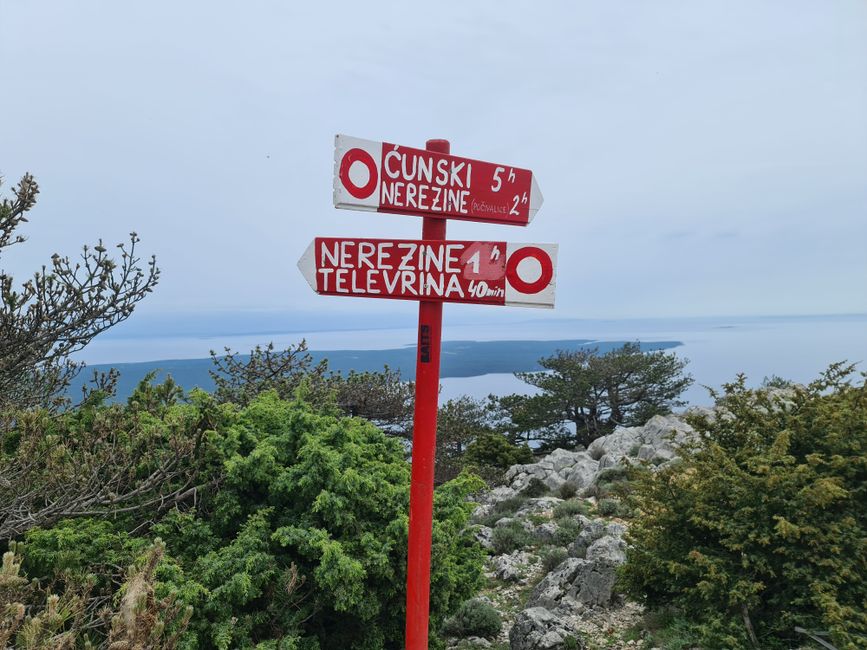
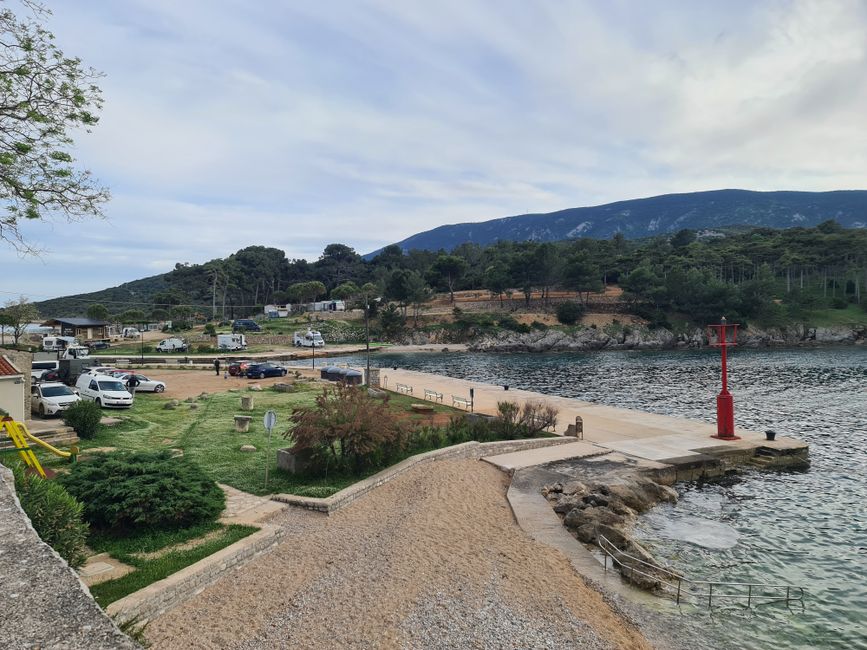
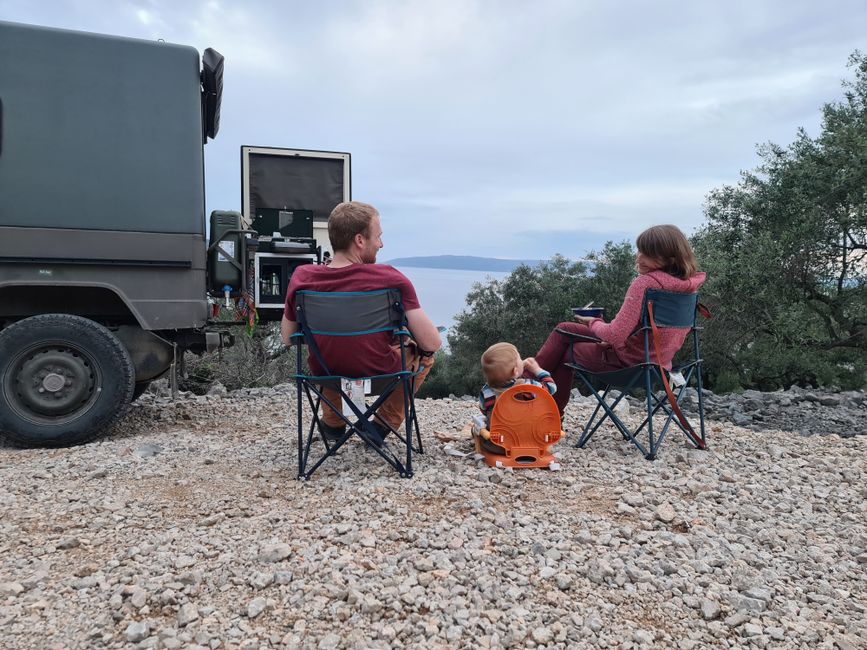
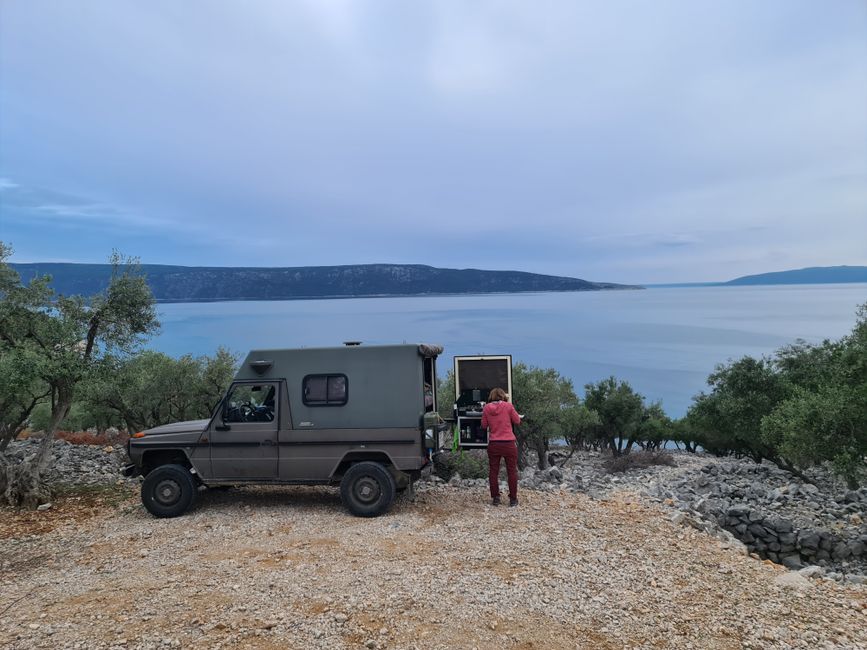
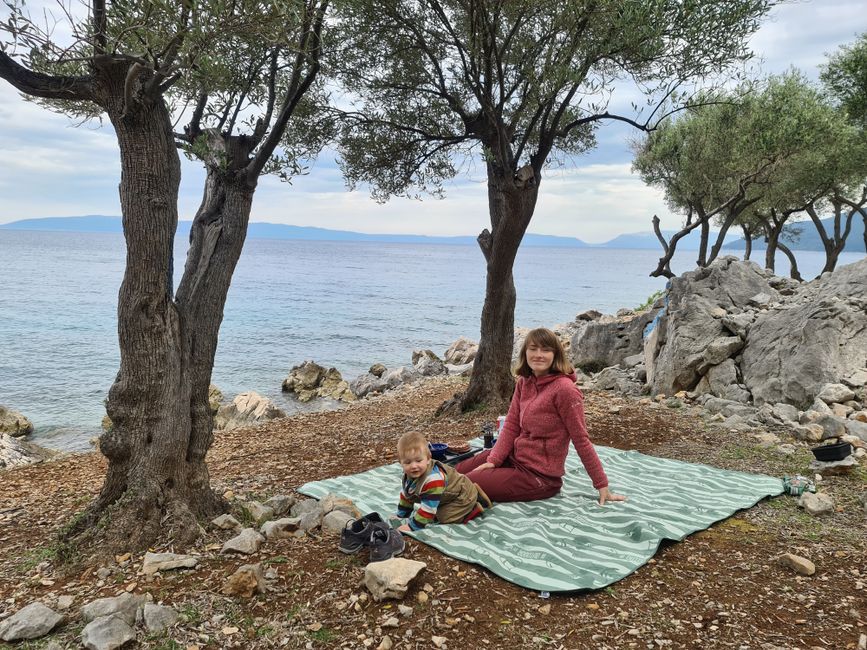
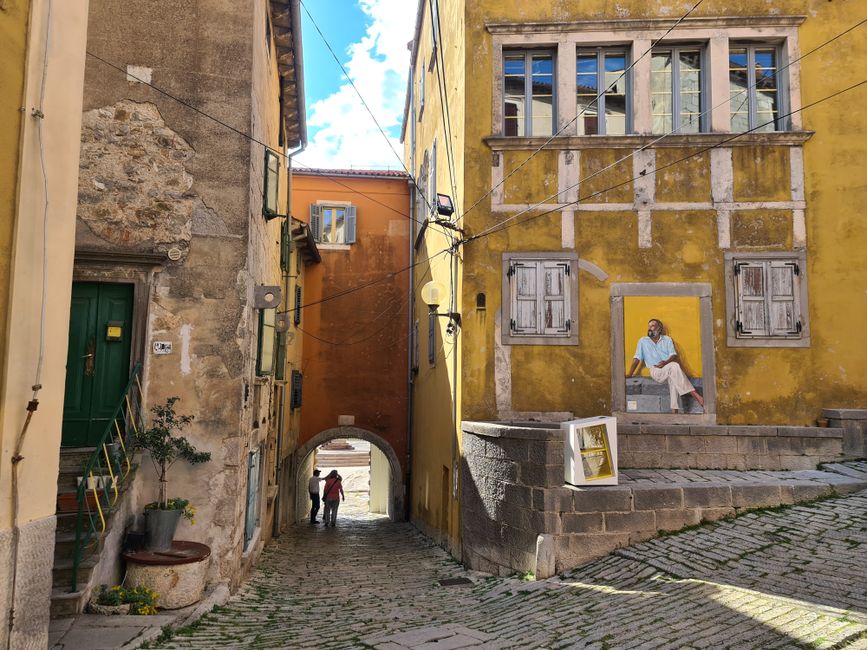
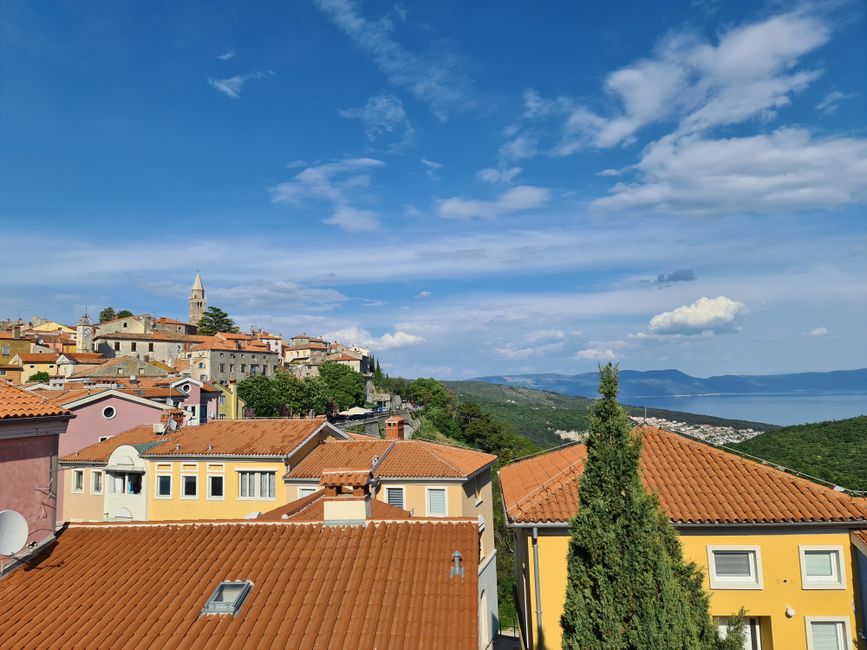
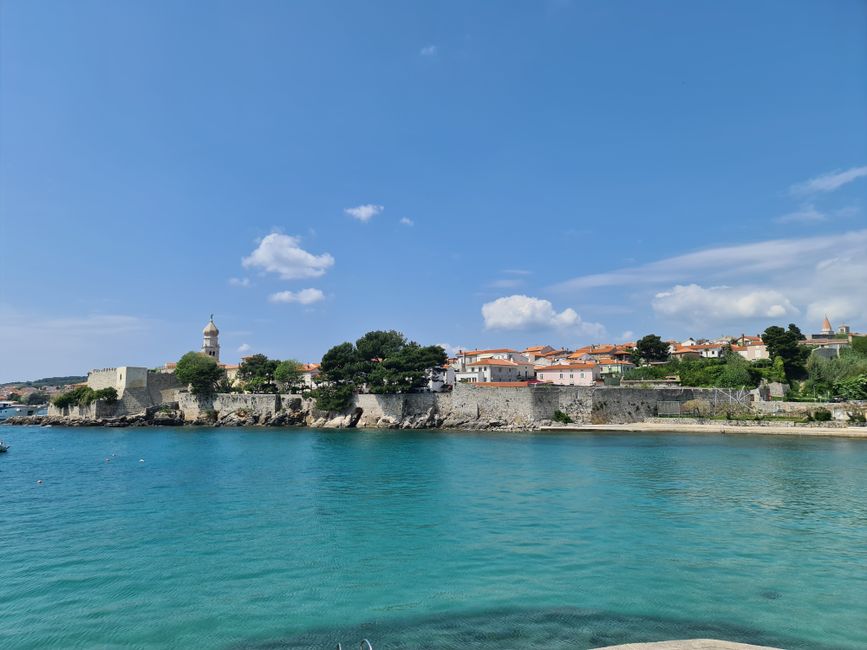
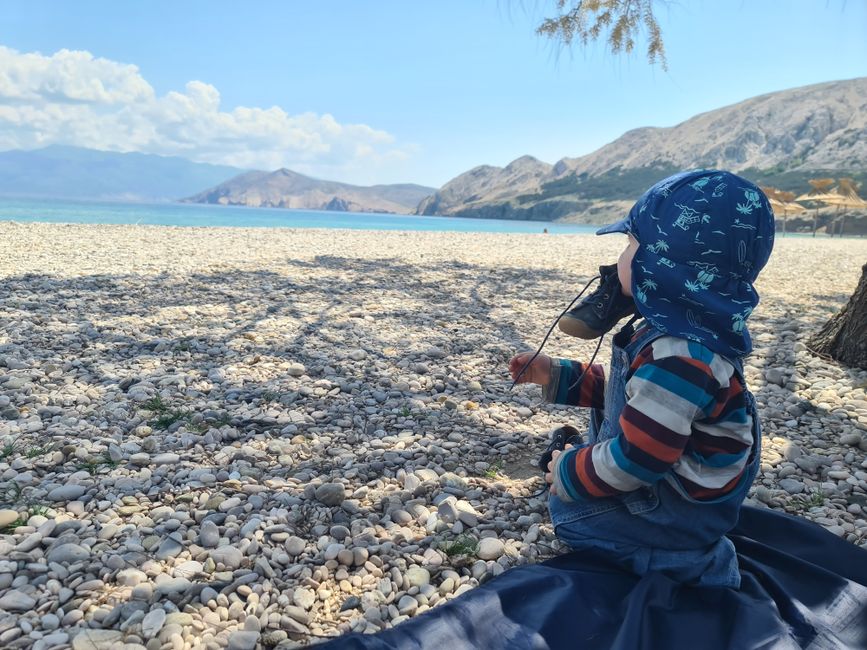
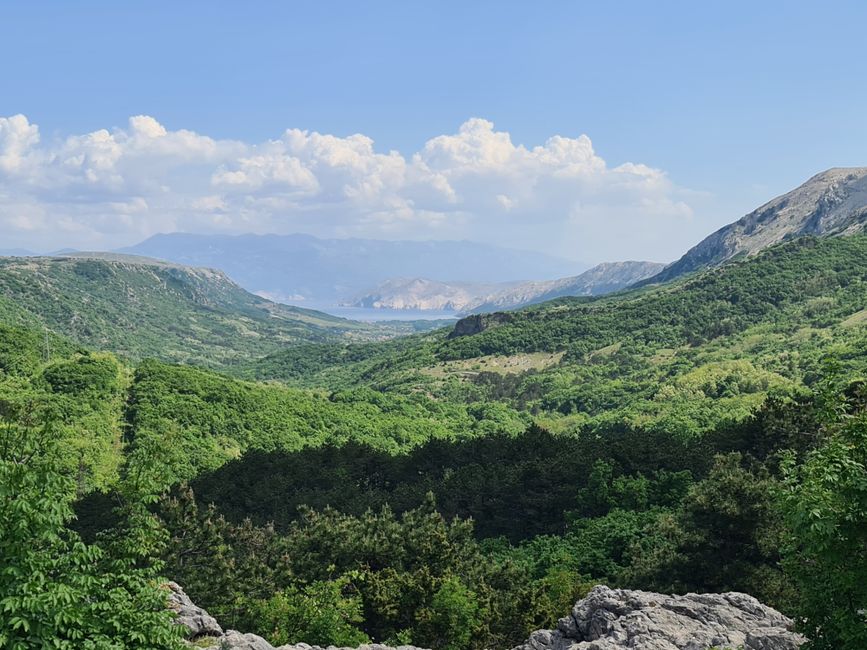
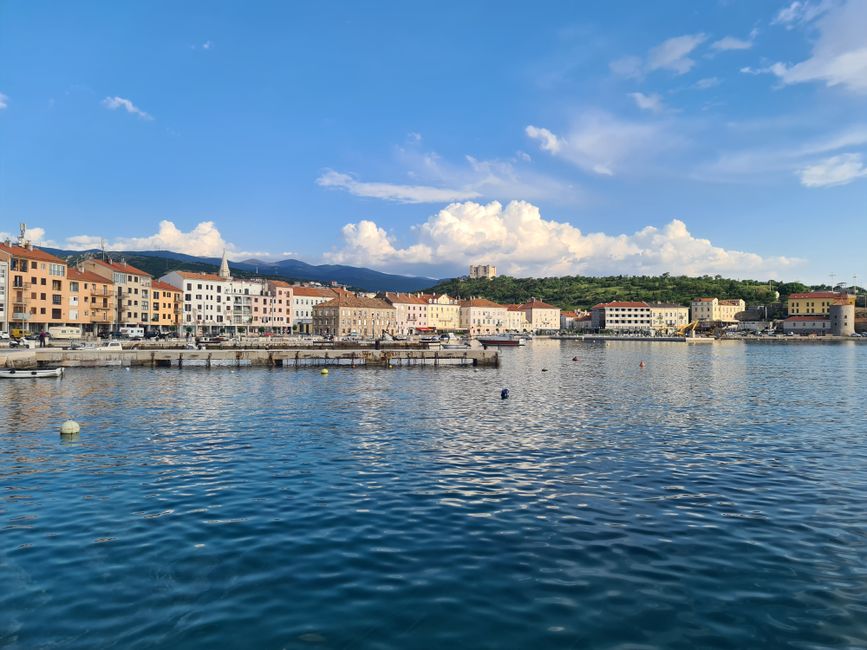
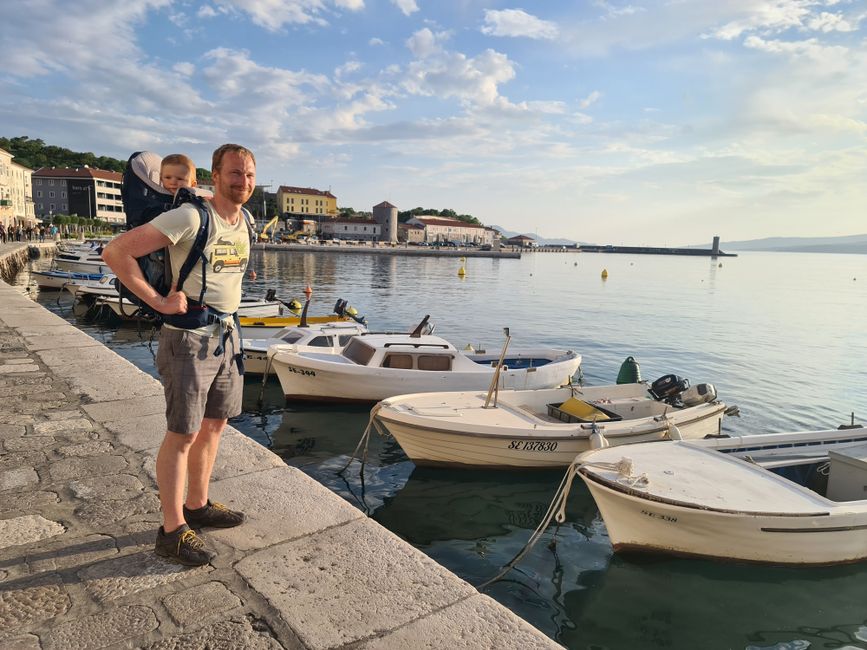
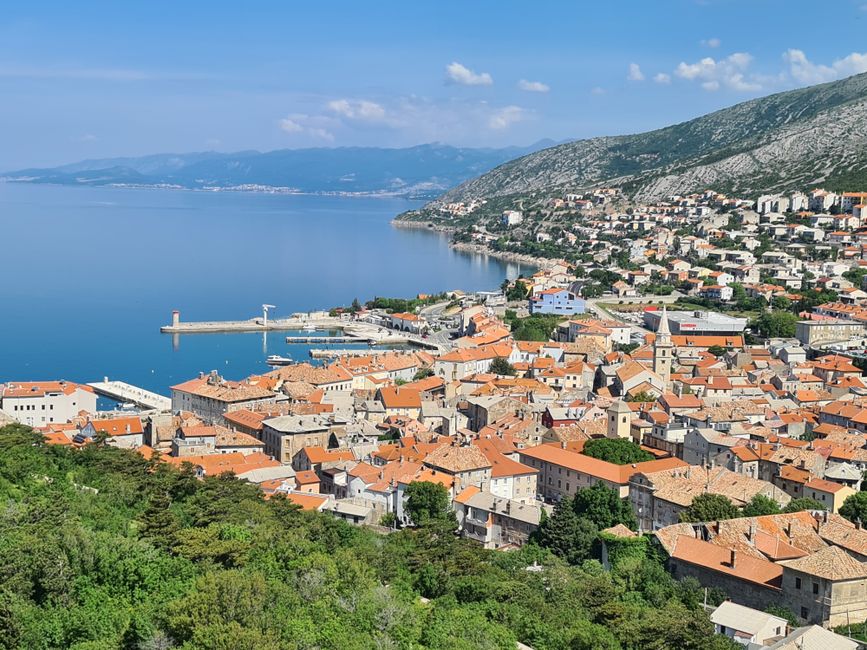
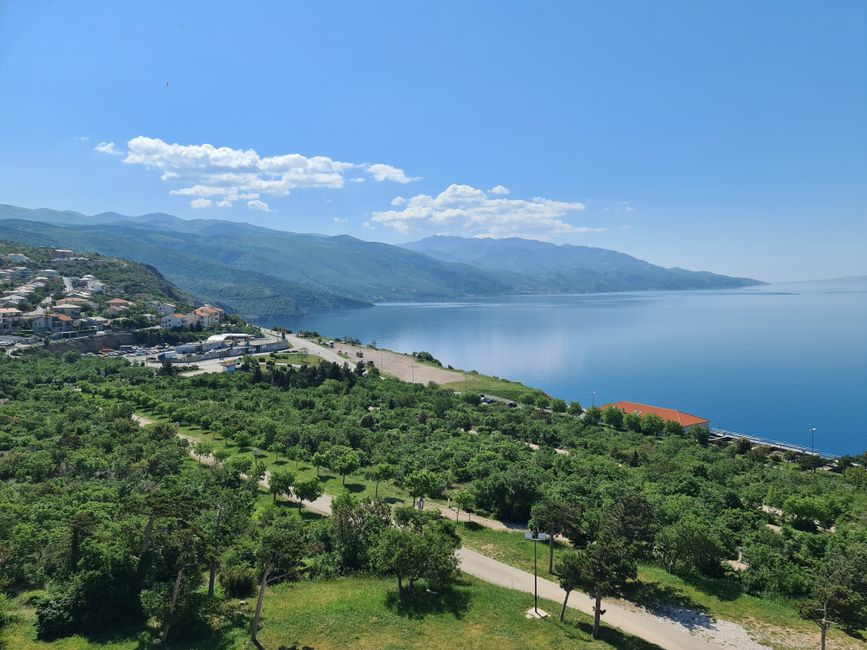
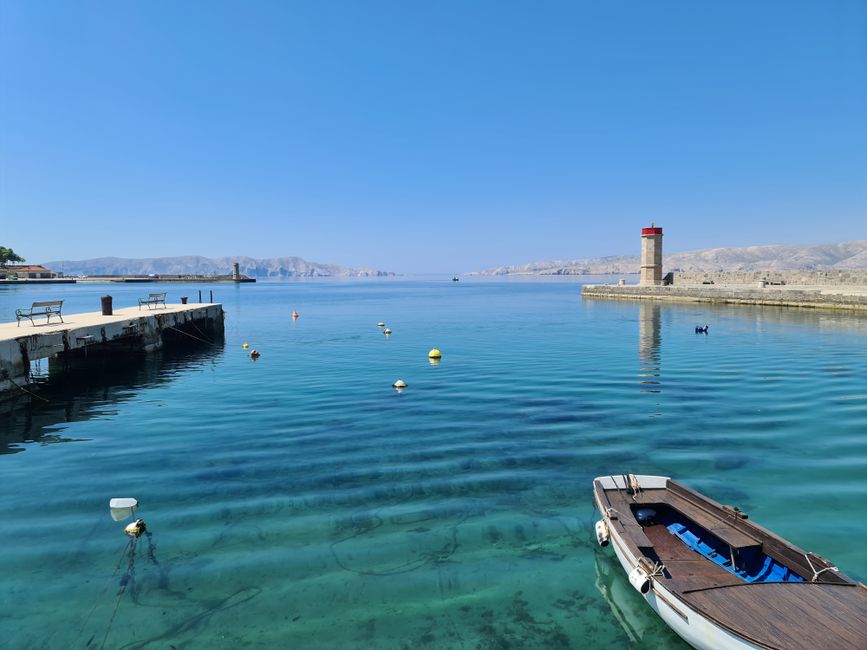
Ақпараттық бюллетеньге жазылу
Slovenia bid us farewell with changeable April weather and since we had been planning to focus on further route planning for a while, we rented a bungalow in Istria shortly after the Slovenian border at the Bay of Piran. Istria also greeted us with wet, cold, and gray weather, and we were looking forward to a warm bungalow. This way, Karl can romp around in warmth and we can read travel guides. That's what we thought. Of course, bungalows in a summer holiday region do not have heating, we were practically the only ones in the complex anyway, and it had only reopened two days ago. But since it was still really cold in the concrete bungalow, the boss kindly lent us his heater and we could start planning our trip.


Istria's coast promised some beautiful cities, but the inland was also worth a visit. So we headed straight to Motovun and Hum, two small typical fortified mountain towns in Istria, the former known for its truffles and the latter considered the smallest town in the world with 17-30 inhabitants (the exact number is not known, counting would take too long), but with all the urban infrastructure. The way there led us through a lush green landscape with small country roads lined with fruit trees and small hamlets. However, driving on country roads turned out to be exhausting in the long run. Speed limits of 60 km/h and 80 km/h alternated and were regularly interrupted by 20 km/h and 30 km/h. This was less fun with the G as our speed beast and acceleration monster, and the line of cars behind us since the Slovenian border. But well, the cities were beautiful to look at, although quite touristy. But we can recommend the Istrian truffle cheese.



One would assume that Pula, as the largest city in Istria, is the regional capital, but that is not the case, it is the small central Istrian town of Pazin. On the way to a hike, we wanted to stay overnight at the campsite here. But since there was a Roadsurfer-Vanlife-Influencer-Instagram event taking place on the site, we had to go to a wild bathing spot with a waterfall instead. Which was actually very nice. But fortunately, Patrick, a Saarland native with a Croatian wife who sells alarm systems to wealthy Western Europeans and was just taking a walk with his dog, pointed out that the police often check there and demand high fines. So he invited us to stay on the field behind their 500-year-old farmhouse, and as a welcome gift, we even got homemade wine and pizza.


The next day, we went hiking in the hinterland of Istria near Gračišće. The hike on the paths of St. Simon was okay, but Gračišće turned out to be a true little gem that tourism has not yet discovered.




After that, we had enough of the hinterland and wanted to go to the coast. The Istrian coast is what the Turkish Riviera is to package tourists. A few kilometers before the coast, the entertainment program begins. Quad parks, fun parks, aqua parks, paintball facilities, and roast pork restaurants dominate the scenery. Huge campsites with all kinds of amenities stretch along the coast. We, with our rustic G, which is rather poorly equipped with comfort, usually don't fit in there. But luckily, we were here well before the season started and had plenty of space and free choice of parking spaces. The days also got warmer and with the sun shining abundantly, life outside became nice and relaxed again, and we spent a few days by the sea.

After that, we continued along the coast to Poreč, Rovinj, and Pula in the south. Poreč was heavily influenced by tourism but has the UNESCO World Heritage Site of the Euphrasian Basilica. Rovinj turned out to be a true visual gem of the Istrian Adriatic coast, while Pula scored with a huge Roman amphitheater and other Roman relics. In Pula, it became clear once again that traveling with a child always brings surprises. While walking through the pedestrian zone, Juliane noticed that one of Karl's new shoes was missing, and since it is the only pair of children's shoes we have with us and children's shoes are surprisingly expensive, the shoe had to reappear. So quickly check the photos on our phones to see where he still had the shoe and when he didn't, and then walk through the city searching for it. Best to search very conspicuously. Because that's how a woman approached us, asking if we were looking for a children's shoe. She didn't find it, but she saw another woman finding a shoe on the market a kilometer away. And indeed, it was Karl's shoe, and the kind market woman saved us a lot of time. Well, unfortunately, Karl apparently got so warm during the search stress that he got rid of his hat somewhere. So we had to walk the same path back, this time looking for the hat. Fortunately, the hat was hanging on a door entrance. So we were lucky twice that day and thank all the nice finders.















Since the coast is so densely built up, wild camping was not possible, and we always stayed at campsites. This also allowed Karl to practice walking more freely.


The southern tip of Istria is much more barren and rugged than the rest of the peninsula. Here is the nature reserve of Premantura, whose gravel roads and thorny bushes strongly resemble the Etosha National Park in Namibia. Only the view of the coast is much better. In the park, appropriately hidden, is the Safari Bar, which, with its location in the bushes, various self-built playgrounds, and a magnificent view, makes you forget for a moment that you are still in Europe.




The eastern coast of Istria drops much steeper into the sea, and therefore, it is less densely populated. That's why we only made a small stop in the historic town of Labin. Our city tours with Karl often involve looking for play areas to balance out the car rides. Croatia surprisingly has many modern playgrounds, and even in the historic city centers, space is found for them.





From Istria, we took the ferry to the twin islands of Cres and Lošinj. Actually, it is one island, but the ancient Romans divided it with a canal. The canal was so important that the town of Osor with 30,000 inhabitants developed there in the Middle Ages, of which only about 80 are left today. How can such a small canal, which separates only two islands, be so important? The treacherous Bora wind caused a lot of problems for sailors back then, and so the Romans could sail through safer waters for longer (tacking against the wind had not yet been invented at that time). Even today, the Bora regularly causes trucks on the mainland to overturn.


In Cres, the G was able to roam its wild territory again and show off its ground clearance. This also allowed us to wild camp again after a long time, ideally in an olive grove by the sea. We drove up and down Cres and Lošinj and were able to unpack our hiking shoes to climb the second highest mountain of Lošinj in the footsteps of Habsburg Crown Prince Rudolf. On the way there, we were accompanied by the beautiful scent of wild growing lovage on the mountain.













From Cres, we continued island hopping and crossed over to the island of Krk by ferry. Here we visited Krk town, relaxed by the sea, and inspected the allegedly most beautiful pebble beach in Croatia in Baška.


Krk bids farewell with a magnificent arch bridge to the mainland, which was even momentarily the longest of its kind when it opened. After that, the coastal road runs along a narrow ridge between the Velebit Mountains and the Adriatic Sea, revealing new spectacular views along the coastline after every turn. Definitely one of the most beautiful coastal roads we have ever driven. Here, up to 1,600 m high mountains meet the Adriatic Sea, leaving little space for settlements. That's why every bay and opening is used by the locals, and we pass many small harbors. In Senj, a former pirate city, we made an overnight stop. The Uškoken, who raided Venetian ships and defended against the Turks on behalf of the Habsburgs, ruled here for a long time. A considerable amount of Croatian national pride is due to the Uškoken.





The next few days will take us to the inland to the Plitvice Lakes, the Una National Park in Bosnia, and then to Dalmatia.
Ақпараттық бюллетеньге жазылу
Жауап
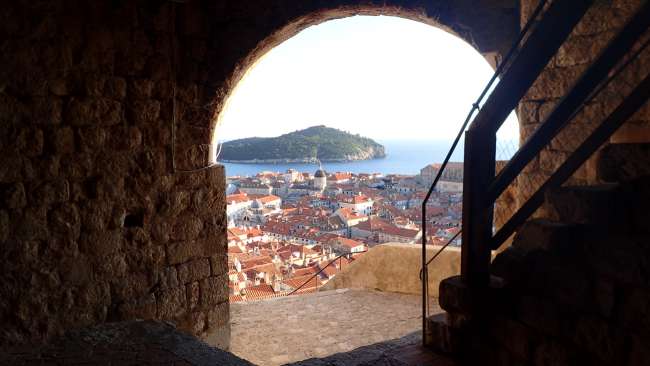
Саяхат есептері Хорватия
